Exotic Morocco – This fascinating country has so much to offer today’s adventurous travelers. I became a huge fan after spending two glorious weeks (with a group of friends) on Overseas Adventure Travel’s excellent “Moroccan Sahara Odyssey” tour in November 2018. (see map below)
In particular, our two days spent in the country’s Sahara Desert region was clearly a highlight for everyone! There were so many fun, unique, and once-in-a-lifetime experiences – including desert tent camping under the stars & riding a camel on Erg Chebbi’s magnificent orange-colored sand dunes.
In my Part One blog post about our Moroccan Sahara Desert visit, I wrote about the cool desert tented camp (can you say glamping?) & the incredibly fun camel ride. Here, in blog post Part 2, I want to share the other really interesting & unusual things we did:
We hunted (and shopped!) for fossils, visited a local nomad family, and toured a date palm farm. We also enjoyed a local Gnawa music performance, got henna tattoos, and watched the sunset from atop a tall sand dune. Yep, it was just another normal day back home – NOT!
So, let’s begin. Come along with me to vicariously experience a visit to the Moroccan Saharan desert region and its warm, friendly people.
Touring & Shopping for Ancient Fossils
Our first “desert activity” took place in the town of Erfoud, just before heading to our desert camp. We enjoyed a fascinating visit to the Macro Fossiles Kasbah workshop. During our tour, we learned that this area is filled with rich fossil beds, first discovered by the French in 1960.
Formed 500 million years ago, the Moroccan Sahara was once a large prehistoric ocean. As the water disappeared, the algae and marine animals died and sank to the bottom and were preserved in the sedimentary rock.
By 1970, the region was becoming known for the quality of its quarries and the artisans who process the fossil layers into beautiful tables, bathtubs, and floor panels. Macro Fossiles Kasbah’s quarry is located just 20 km (12 miles) away near the border with Algeria.
- 3-lobed ancient trilobite / ammonite (nautilus) on right
The reserves are important especially for squid (that look like spears to me!), trilobites, nautilus (ammonites), and starfish. Trilobites (meaning 3 lobes) are a well-known group of extinct marine arthropods – at least to people who study these types of things!
After the workshop tour, we were led into a beautiful shop filled with all types (and sizes) of enticing items for sale. I fell in love with an amazing coffee table (photo below), which ONLY cost $2,600 USD (which included the 4-piece ornate fossil stand & shipping). Luckily, I was able to restrain myself and settled for a pretty fossil dish for a more reasonable 300 Moroccan dirham (MAD), around $34.
- My beautiful table / view on right showing the top section with all the amazing fossils within – including ancient squid (that look like spears)
Visit to a Local Nomad Family
Another highlight of our desert activities was the opportunity to visit a local family so that we could learn about life in the desert. And, as you can imagine, it was a stark contrast to our American city life!
When we arrived at the home, we were greeted by 20-year-old Aisha (above right) who acted as our host until her mother Fatma arrived a bit later. Fatma has 8 children – 7 girls, and 1 boy. Unfortunately, her husband died last year from health issues. He was from Algeria and worked with camels, supporting tourist caravans.
They were a nomadic family until they “settled down” twenty years ago. They have chickens, plus two goats and a mule. The mule (always a beast of burden!) helps transport their jugs of water, the source of which is a 10-minute walk away.
Aisha first gave us a tour of their humble desert home, showing us the cooking area with a wood fire “stove” which she was using to heat tea for our visit. We also saw the kitchen, the sleeping area and a storage area.
After the tour, we headed out to a brown lounge tent to have tea and enjoy a chat. In addition to Aisha, Memousha, age 14 and Fatima, age 8 joined us. (below right) Our Moroccan OAT Tour Leader Aziz helped pour the tea, Moroccan style (from high up). He then translated the conversations between our group and the family, who spoke Berber.
We learned that two of the sisters are married and live in Rissani. The family has cell phones, plus relatives with 4x4s or motorbikes help them get and transport things when needed. Even though there is a primary school in Merzouga, the girls have not had any real education.
The mother Fatma arrived during our tea chat, so she joined in. Sadly, it was soon time to say goodbye. Individually, we came forward to thank Fatma and give her a gift of cash as our appreciation for her family’s warm hospitality. (above right)
She was happy & delighted with our gifts. And, yes, OAT also reimburses Fatma for hosting guests. So, we left feeling good that we were helping to support this lovely family.
Watching the Sunset from Atop a Sand Dune
Leaving Fatma’s home, our “next task” was to enjoy the sunset from the top of a sand dune. Our 4×4 drivers were waiting to take us on a 20-minute drive to a beautiful area of dunes. The sun was setting quickly, as we arrived at 6:15pm.
So, we hurriedly collected our bottles of wine – complete with real wine glasses! With Aziz leading the way, we scurried up to the top of the chosen sand dune. There, we poured the wine & toasted our amazing tour of Morocco, and wonderful first day in the Sahara. Of course, we had to get a perfect group photo to remember this special day!
With the sunset complete, always-adventurous Peter (below left) decided to “take a walk” over to the top of the next sand dune. Somehow, I felt inspired and like a kid again. So, without warning, I did a somersault and rolled down the dune before anyone could get a video. Darn…. Luckily, the sand, despite being hard packed, was soft.
After returning back to the top, a small group of us decided to join Peter over at “his dune.” So, we headed back down our dune and up to the top of the other. We were all barefoot – and the deep sand was so fine and felt quite lovely.
What a special experience this sand dune “happy hour” was! We headed back to our desert camp around 7pm for a delicious dinner followed by stargazing under bright clear skies.
Hunting for Fossils / Chumming With Local Children
Day #2 in the desert gave us a chance to hunt for fossils. Following the morning camel ride, our 4×4 drivers took us to an area of rocky terrain known for easily accessible fossils, just ripe for the picking. Having a half-hour for the hunt, our group spread out in search of cool mementos to take back home.
However, I spent most of my time with some adorable local children, who were hanging around hoping to sell fossils to visitors. I learned that the kids, who were from a nearby village, were on a school break. The oldest girl in the group was 12, another around 8. Like all kids, they loved hamming it up for my camera, both with fun poses and air jumps for my video.
A handsome boy in a beautiful blue desert robe approached me. (below right) He was selling fossils – and laid out my three choices in the sand. There was a blade-shaped “spear” fossil (an ancient squid), a snail and one white crystal rock.
I liked the spear, so we began our price negotiations – by each writing our number in the sand since he did not speak English, and I don’t speak Berber. He started with 100, I countered with 50, he then wrote 80. Great, we had a deal! (80 MAD is ~$9).
At the end, an 18-year-old boy named Hassan spoke to me in decent English. He told me he likes Bob Marley & gave me his WhatsApp address to send him some of the photos I took. Thanks to the universality of the Internet, I love the global connectedness we have, no matter how remote a location!
A Gnawa Musical Performance in Khamlia
After our fossil hunt, we took a fun 45-minute drive through desert terrain to the remote village of Khamlia (below right), famed for its Gnaoua (aka Gnawa) musicians.
- Interesting desert scenery – with two lone trees & camels
- Desert village of Khamlia with its mosque
Gnawa music originally came from Sub-Saharan Africa. It is a mix of African & Moroccan – a form of trance music & the blues by former slaves. One source stated that Gnawa music is a fusion of poetry, music, and dance created in Morocco by formerly enslaved black Africans to preserve the religious and spiritual traditions of their ancestors.
There at Dar Gnaoua, we enjoyed a cup of mint tea & a lively musical performance.We were warmly greeted by the host who gave a short talk about Gnawa music. Typical instruments are the gimbri (a plucked lute with 3 strings), qraqeb (metallic castanets), and tbel (large double-headed drum made of wood & cow skin).
Then it was time for the musical performance. The first Gnawa song involved 2 drummers and 4 men standing with their castanets. Then sitting down, four musicians played – one lute, one drum and 2 castanets.
After a few songs, it was time for audience participation, so most of us got up and danced along. Afterwards, I bought one of their CDs, which they just happened to have for sale!
Henna Art Demonstration
Late that afternoon, it was time for our final two desert excursions. First stop – the home of Hadiza & her 16-year-old daughter Fatima for a henna demonstration & application. Henna designs (aka tattoos) are a long-standing & beloved part of Moroccan culture.
As is always Moroccan custom, first line of business was serving us Moroccan tea as a welcome. Mom was busy preparing the henna – pounding the green plant, straining it, then grinding into a fine powder. All while balancing her 8-month-old son on her lap. The henna powder is then mixed with water to create a thick mud-like paste.
Soon it was time for us to get our own henna tattoo by Fatima – our choice of hand or feet. I went first, choosing my hand. Fatima used a type of syringe to apply the intricate henna design – which went on dark green and thick. Over time it dries and peels off, leaving a colorful orange design on the skin – which can last for several weeks.
Not surprising, all the women in our group got their henna. Peter was our group’s only “brave man” to say yes, eagerly offering up his foot for a design. Afterwards, we proudly posed for a “group photo” of our hands and feet.
If you’d like to know more about Moroccan henna traditions, here’s a good article from The Culture Trip blog post.
Visit to a Date Palm Farm
Our final visit was to a date palm farm owned by Mohammed, a dynamic 63-year-old. This amazing man began the farm in 1985 in the middle of the sandy desert (near Merzouga), after he discovered water (by the divining technique) & dug a well.
Currently, he has 150 date palms – all female except 1 male tree! He started by planting baby date palms from cuttings, not from seeds. He watered them every other day – and it took 5 years before they bore fruit. What an impressive act of patience!
In addition to date palms, Mohammed grows other types of produce, including henna, corn and vegetables. He has eight children. However, he runs the farm all by himself, except at harvest time when his two sons help. Once again, most impressive!
Mohammed gave us a great tour of the farm, despite the strong desert winds that had picked up that afternoon and were pelting us with sand. He was particularly proud of his deep well, and his pump’s motorized system for irrigating this barren land.
At the end, we headed back out to the front of the farm to his house and stable where he keeps his goats and sheep.
There, his sweet & shy young daughter had set up her visitor shop on a ground cloth. She was selling Moroccan scarves and a variety of colorful fabric camels for 50 MAD (~$6). Of course, I & many others bought a camel as a lovely souvenir and to support this delightful family.
Saying Goodbye to the Sahara
Bidding adieu to Mohammed, we headed back to our tented desert camp for our second & final night under the stars. First, we enjoyed a tasty dinner of Moroccan pizza & then a drumming performance by the camp’s local staff – as detailed in my first blog post.
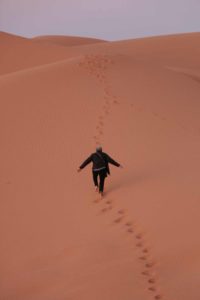
I hope you might consider such a trip yourself – both to visit Morocco in general and the Sahara desert region, in particular. It was great being part of the Overseas Adventure Travel (OAT) tour as we had a great local guide & everything was taken care of for us, including being shuttled from place to place by our trusted 4×4 vehicle drivers.
CHECK OUT MY OTHER MOROCCO BLOG POSTS:
- Morocco Journey Highlights – Why This Exotic Country Will Charm & Fascinate
- Morocco: My Thrilling Sahara Desert Camp & Camel Ride on the Dunes (Part One)
COMMENTS: Have you visited Morocco? Did you get to the Sahara desert region? What did you do there – including ride a camel? How was your experience? Anything else you’d like to share?

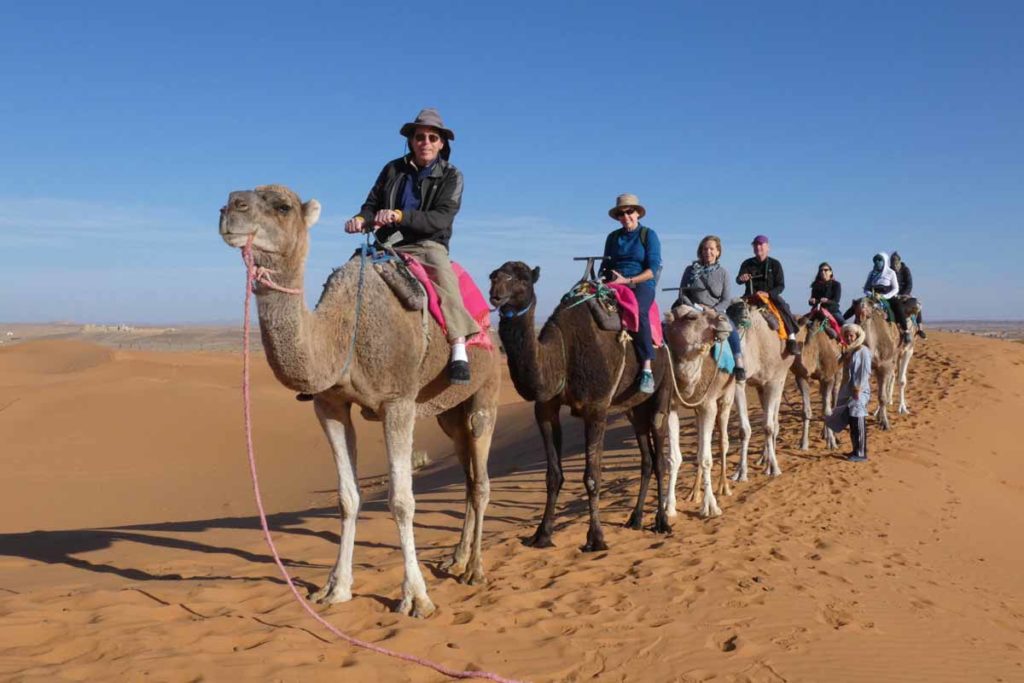
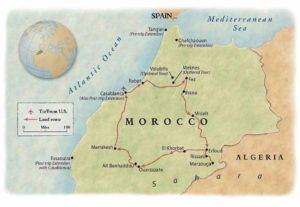
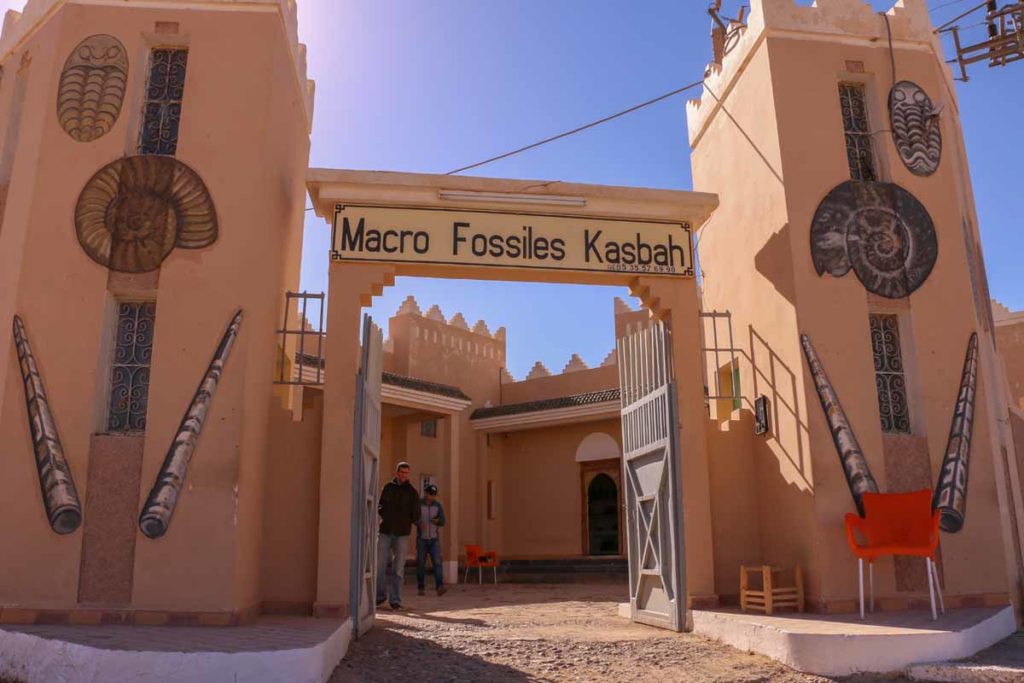
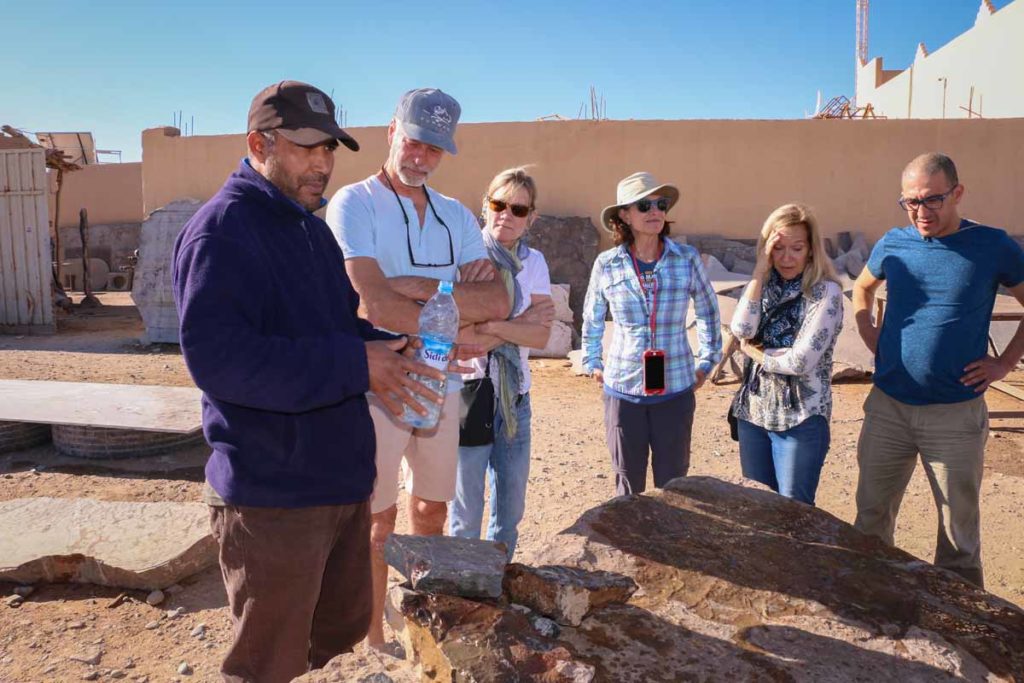
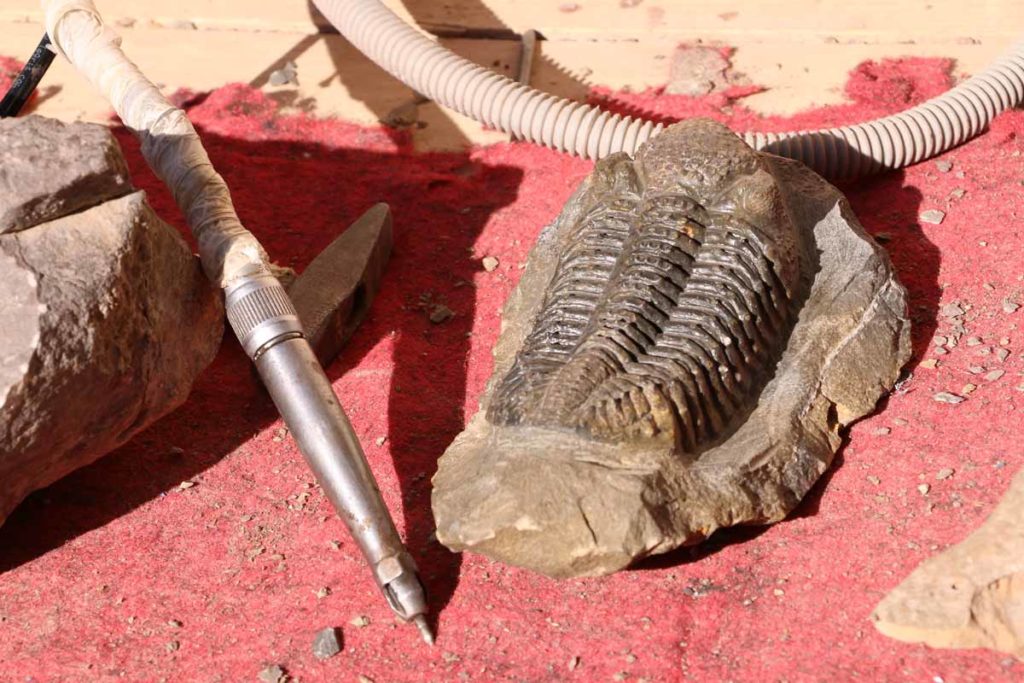
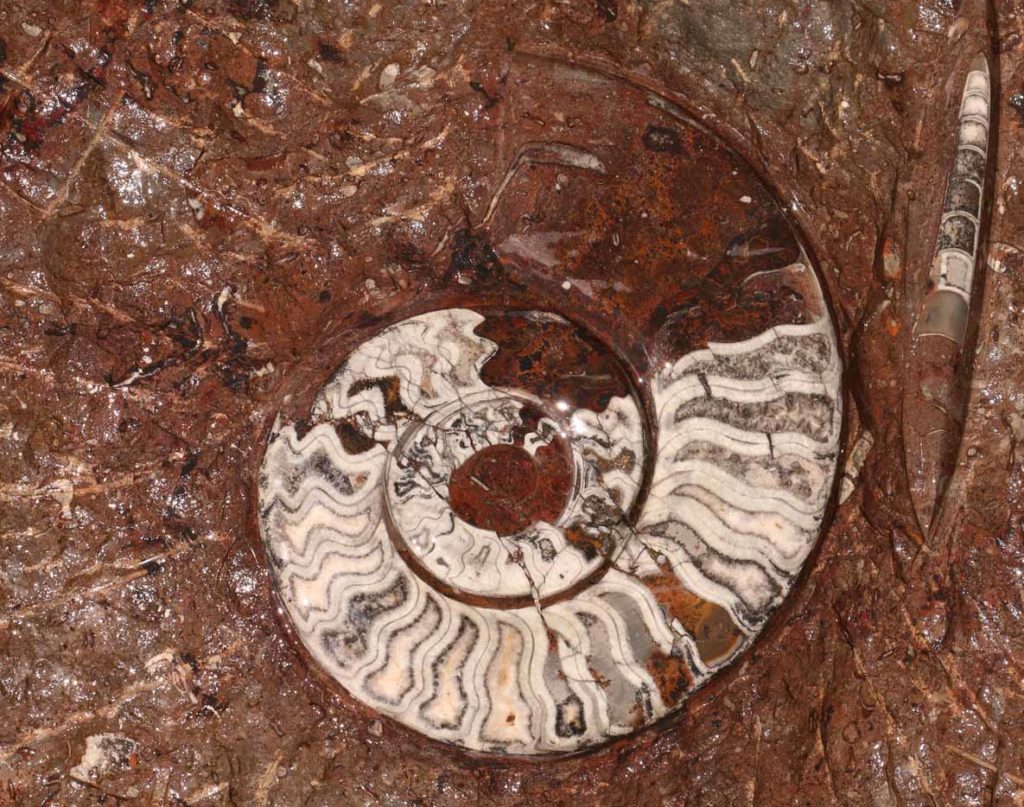
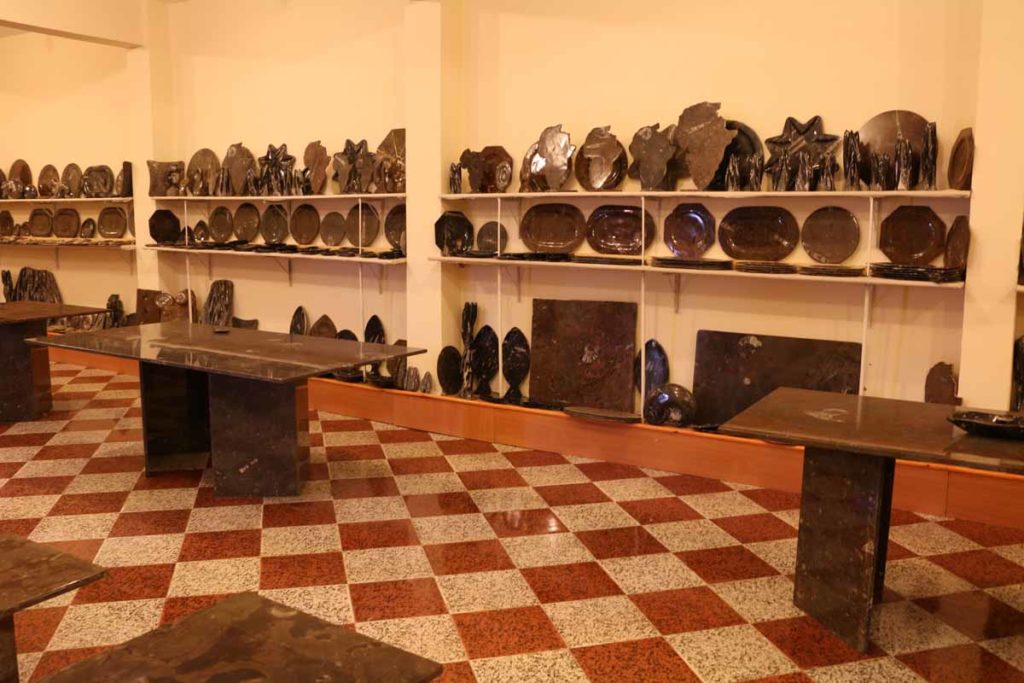
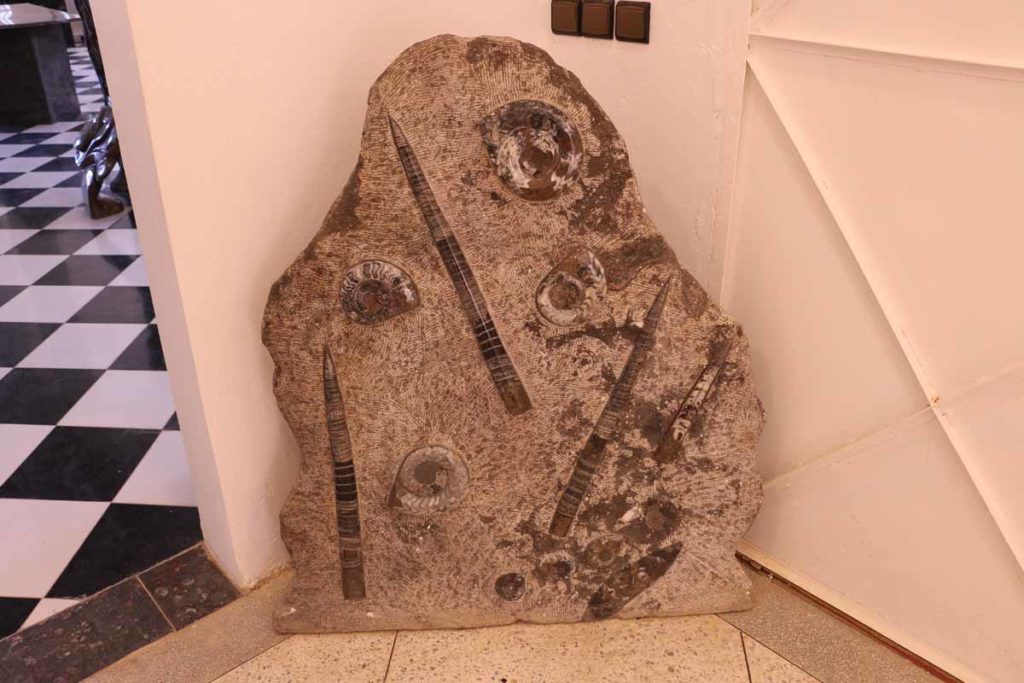
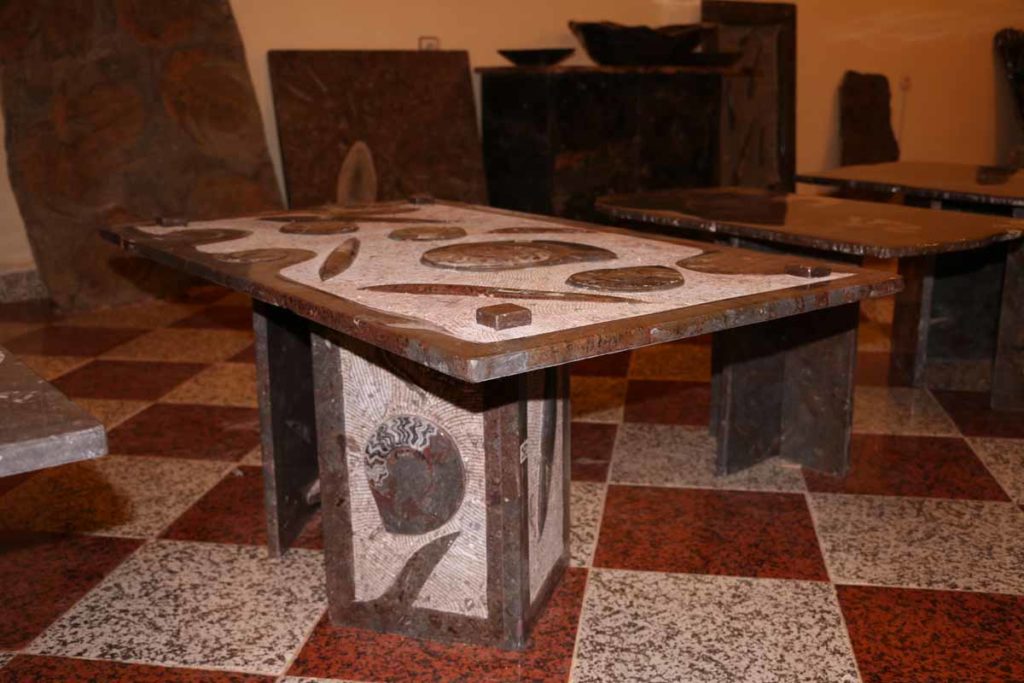
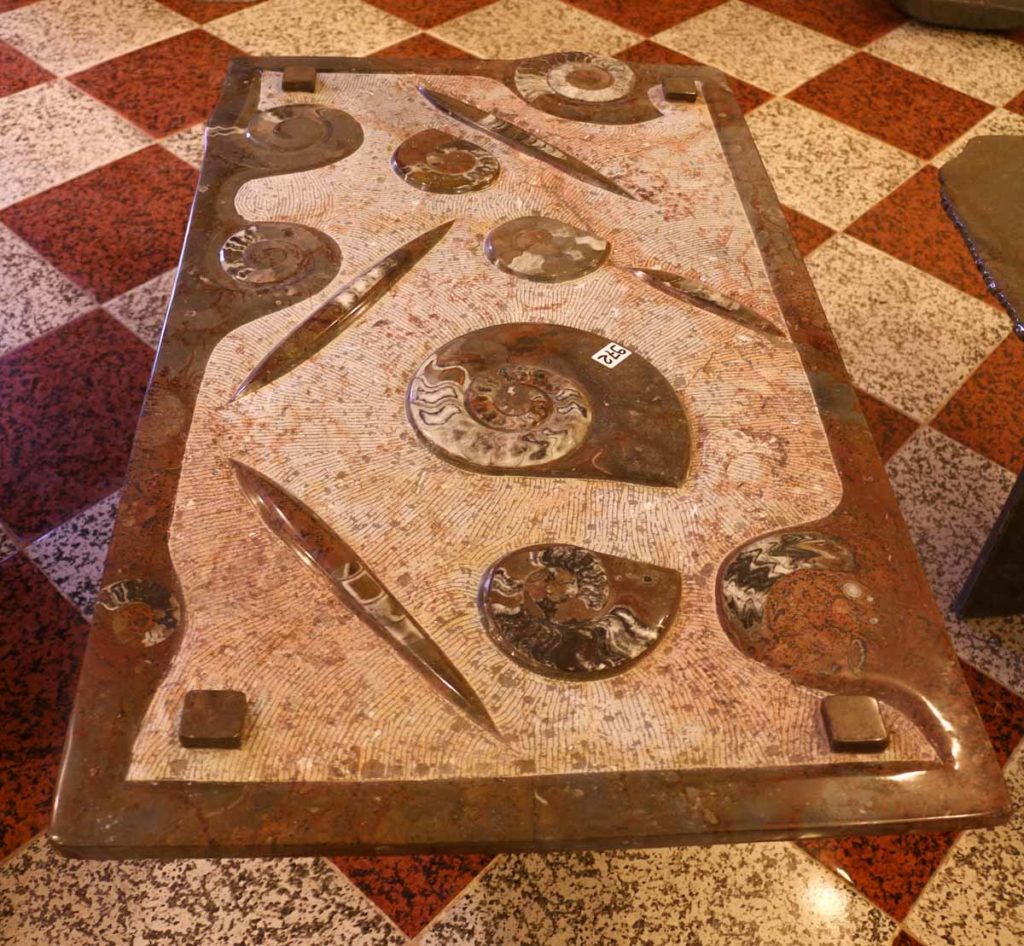
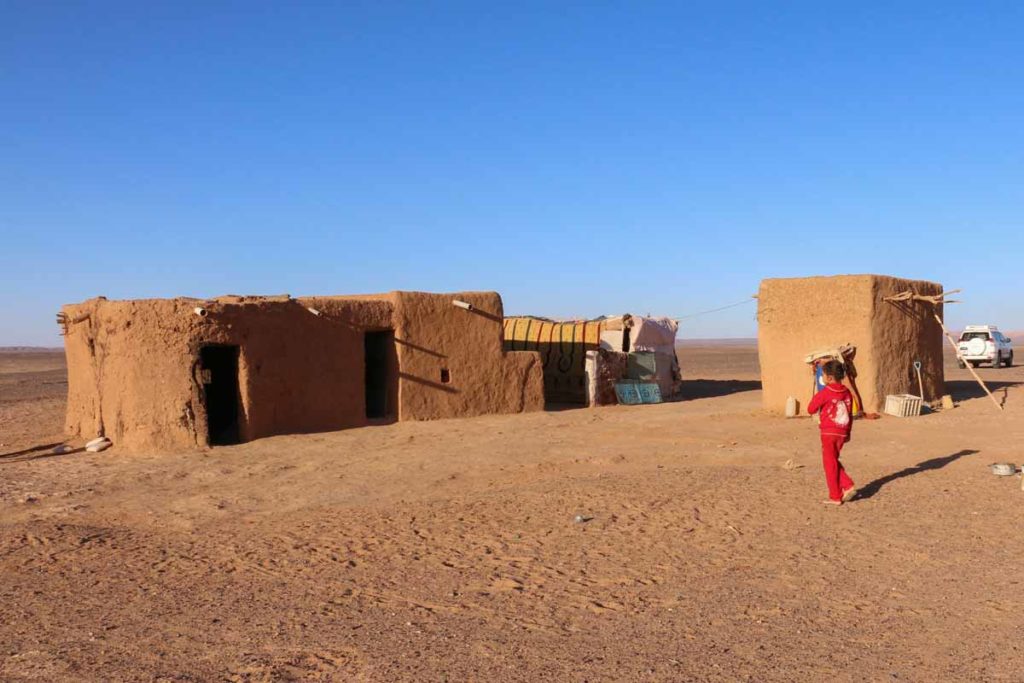
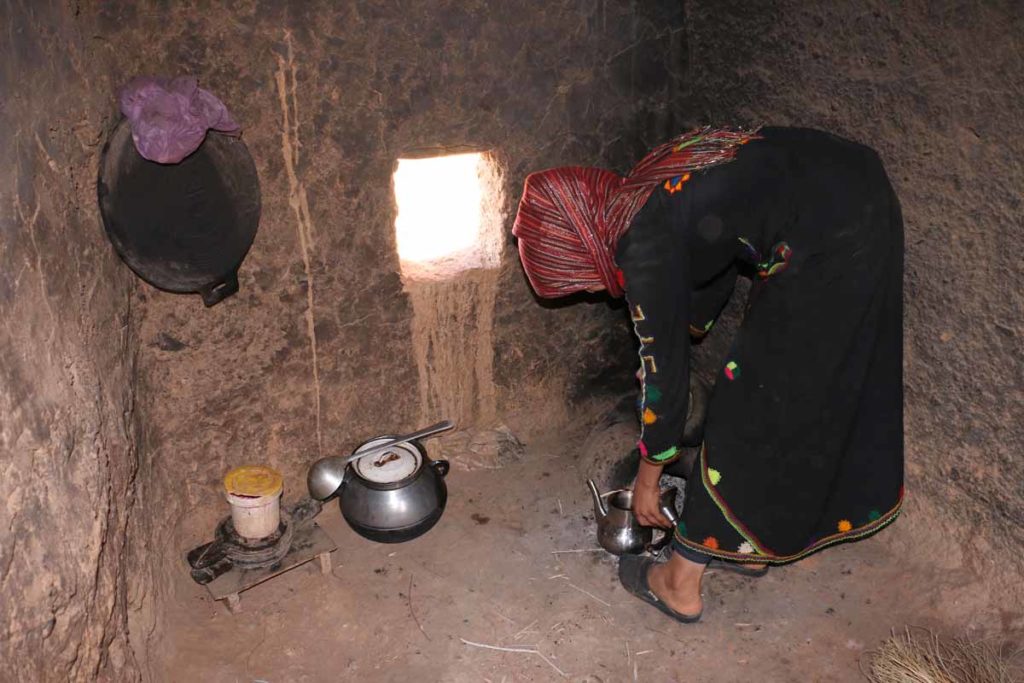
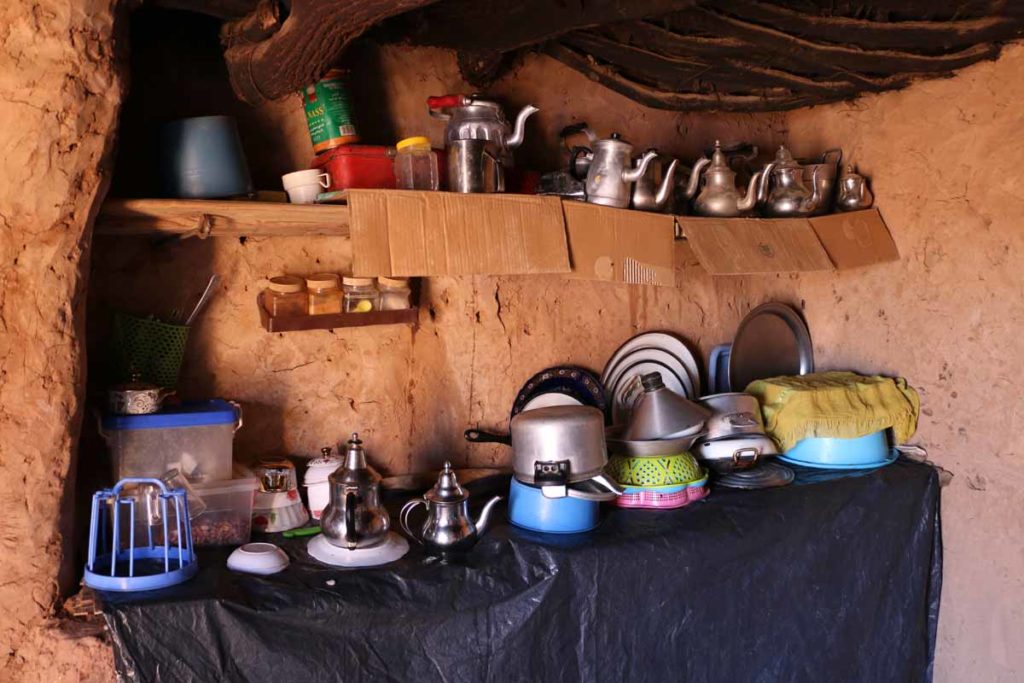
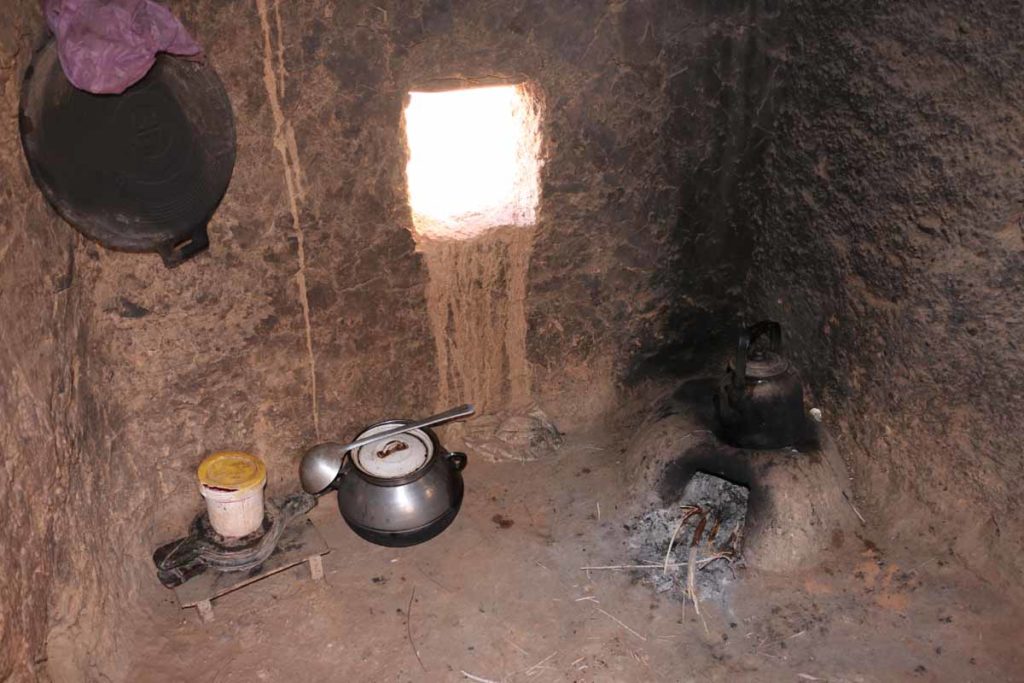
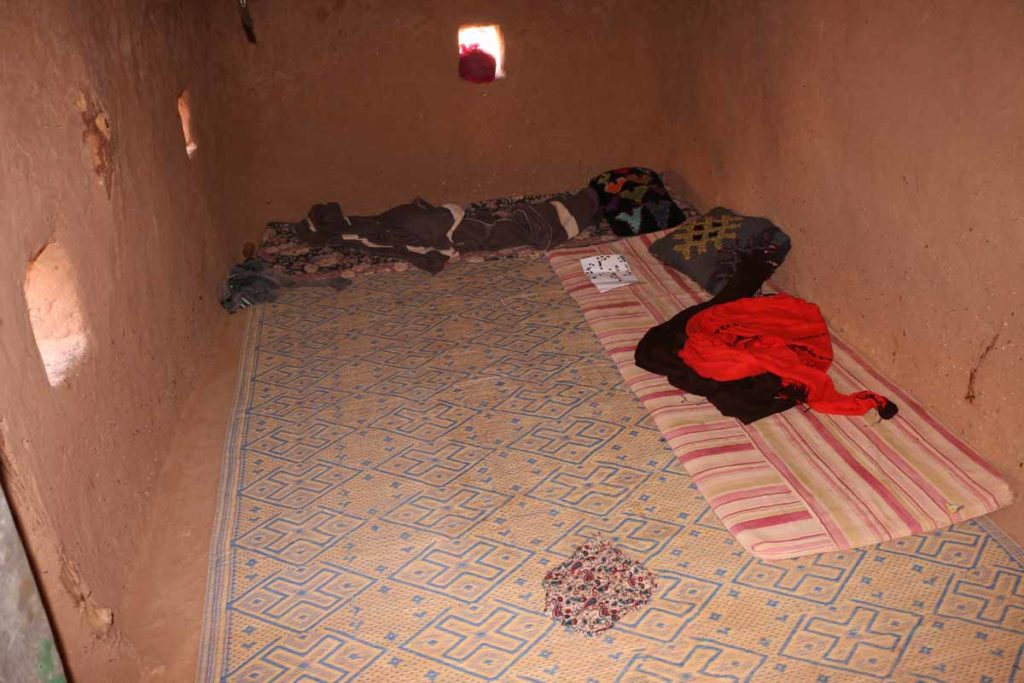
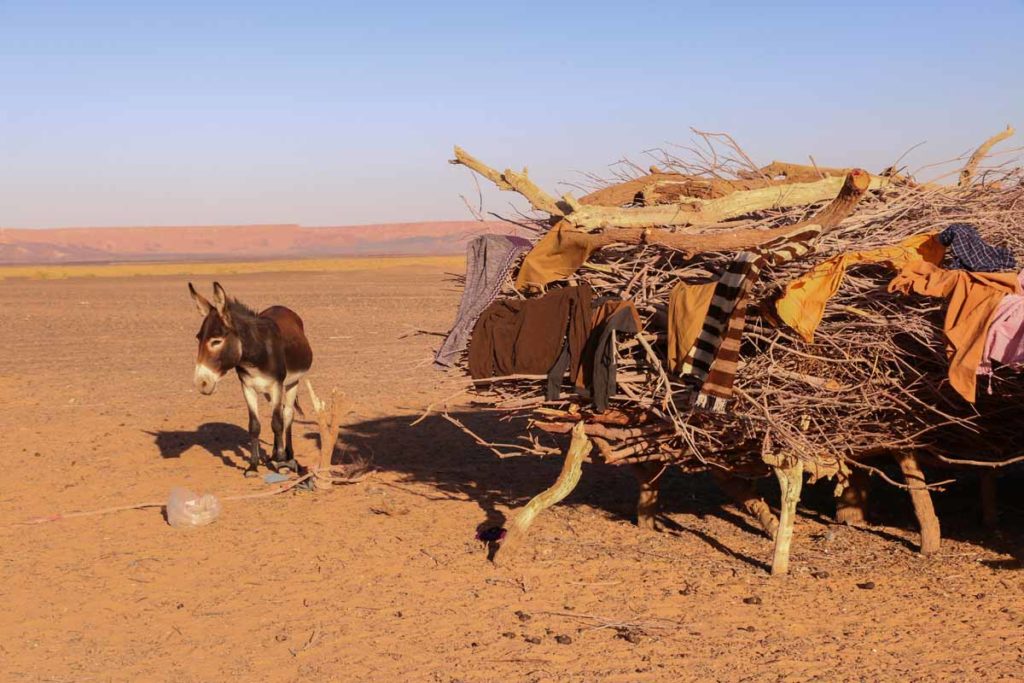
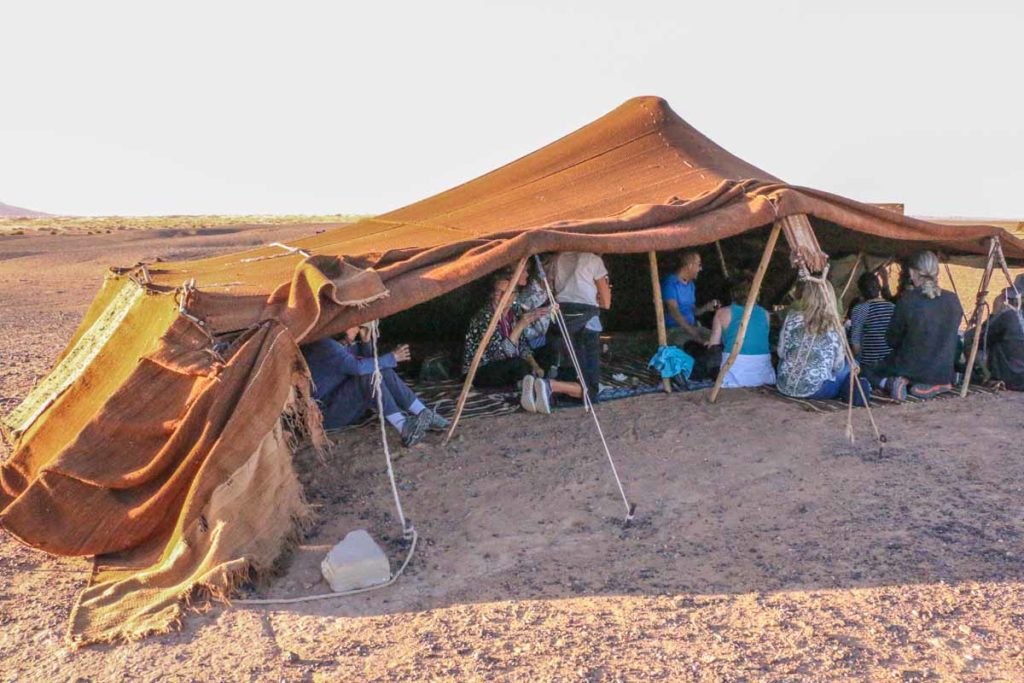
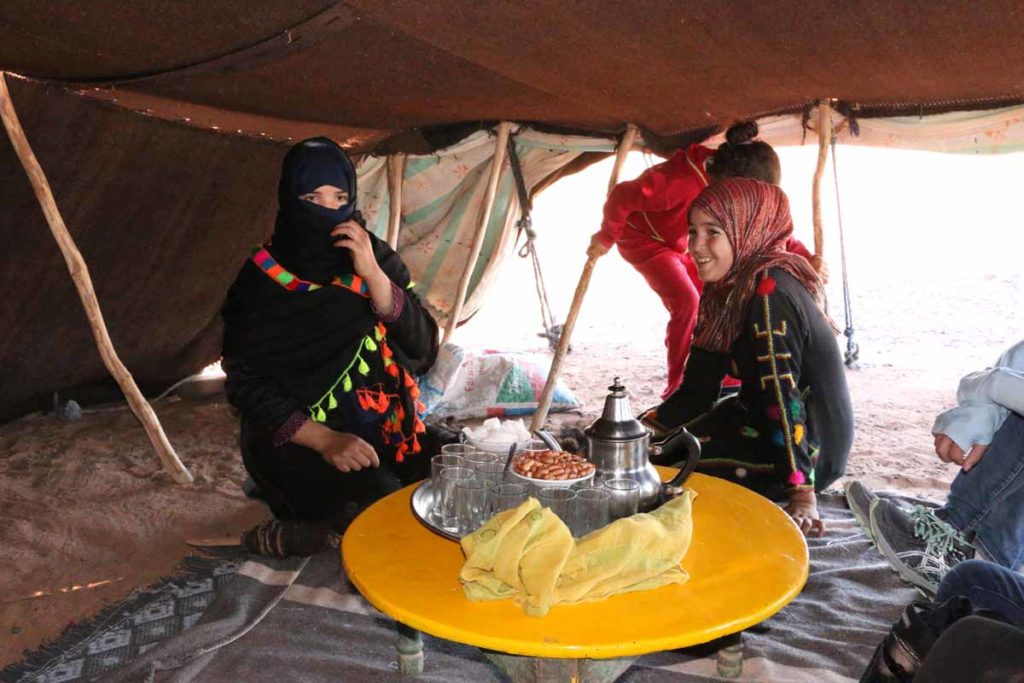
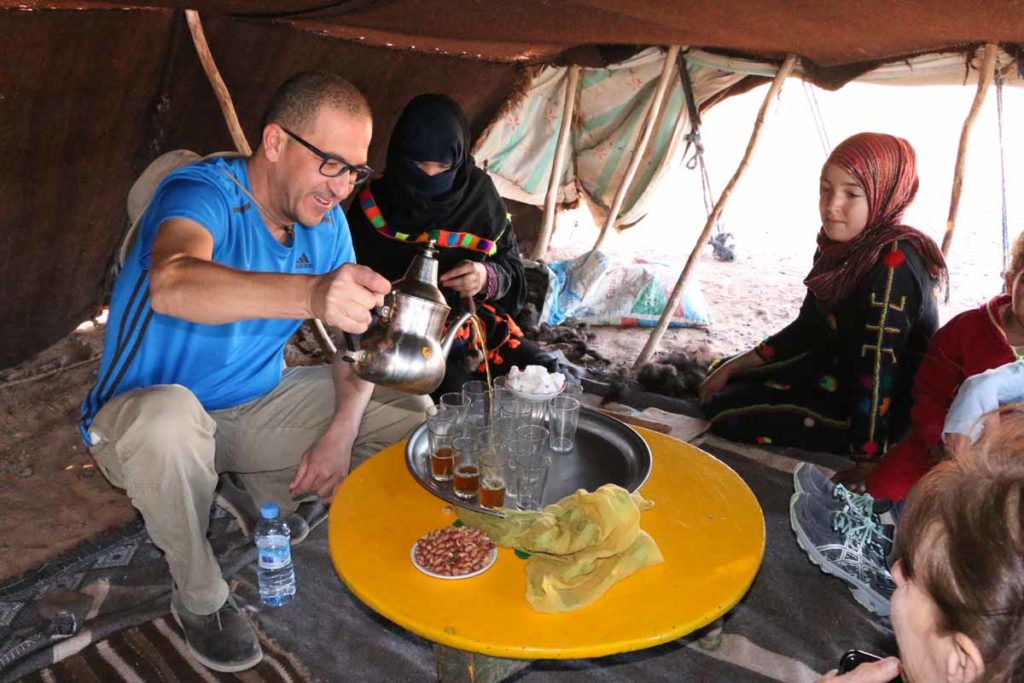
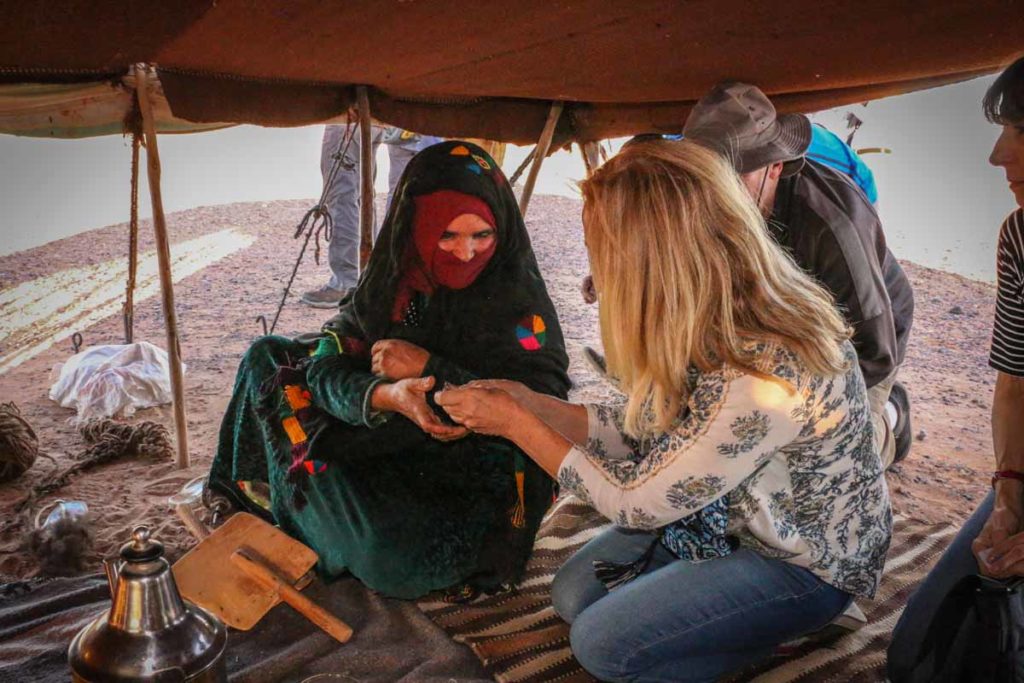
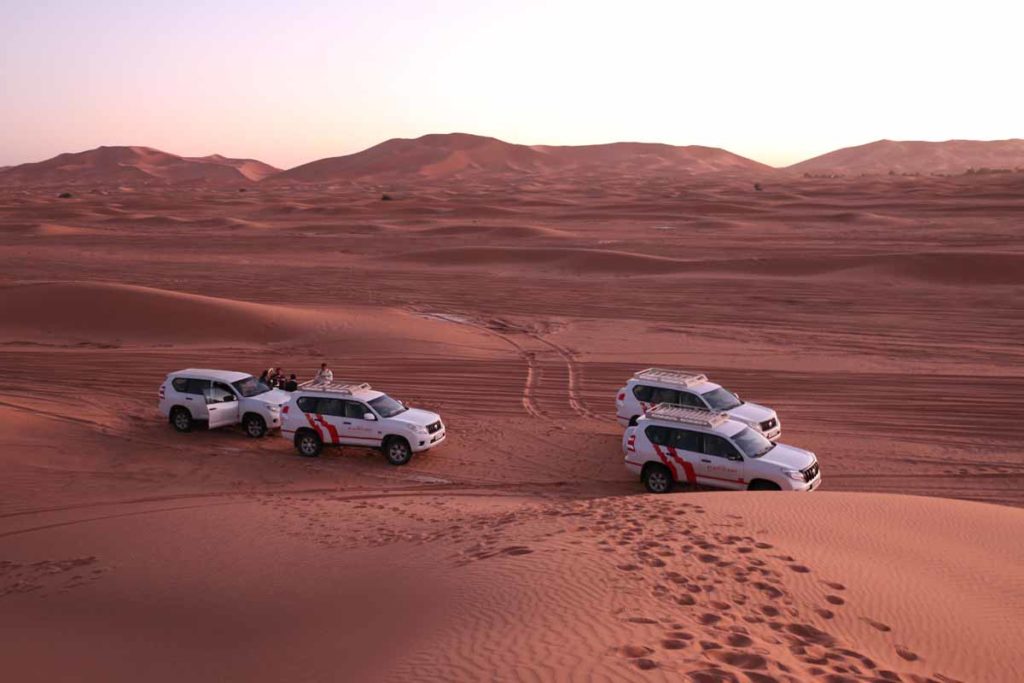
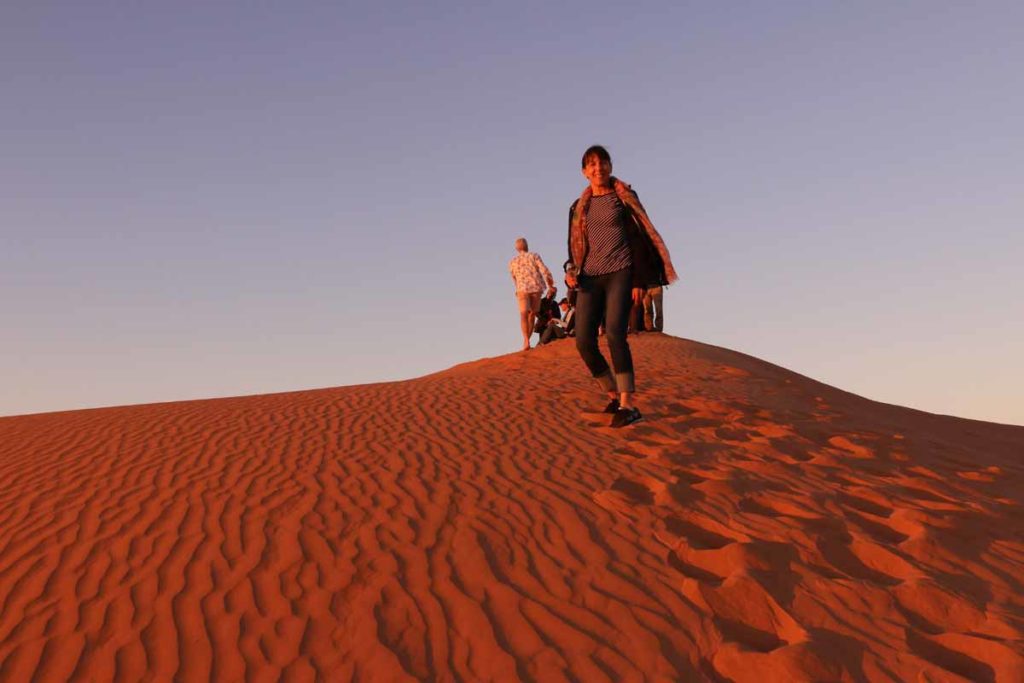
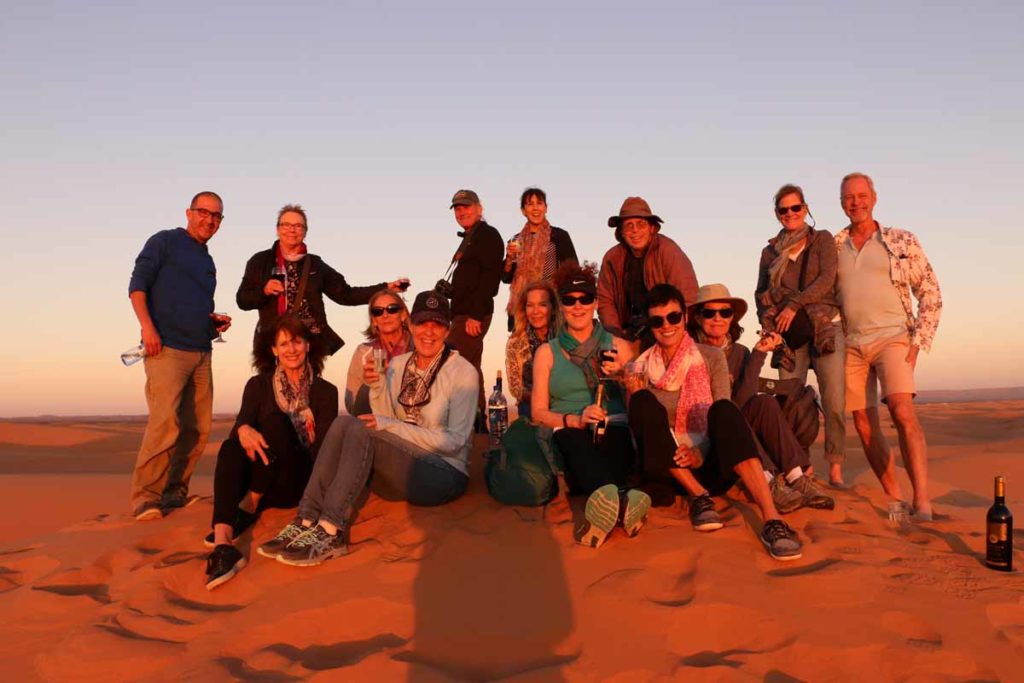
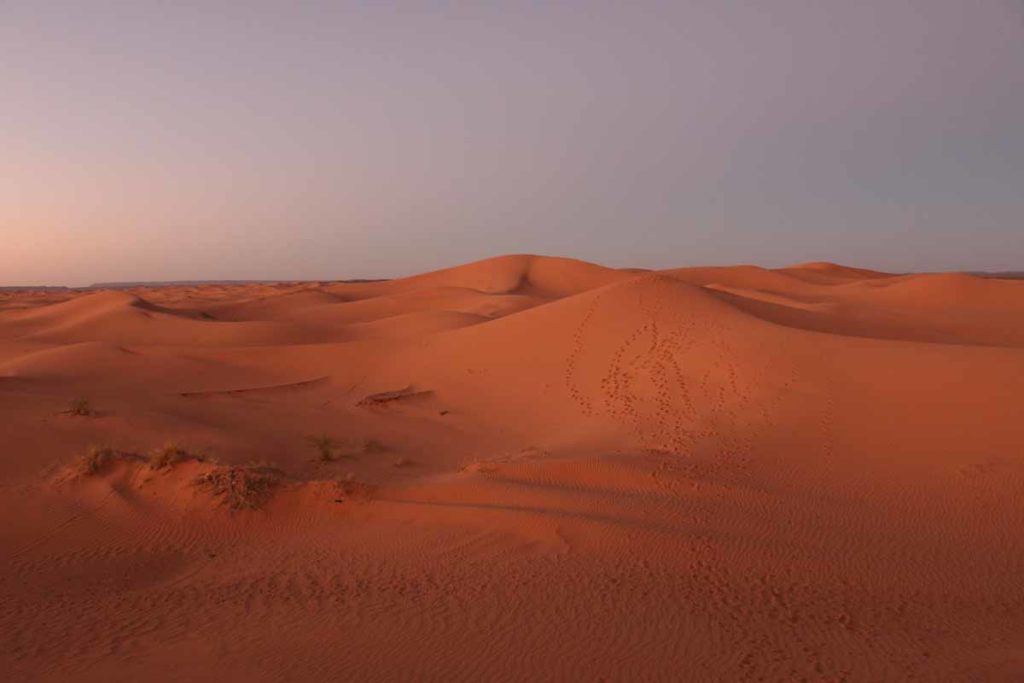
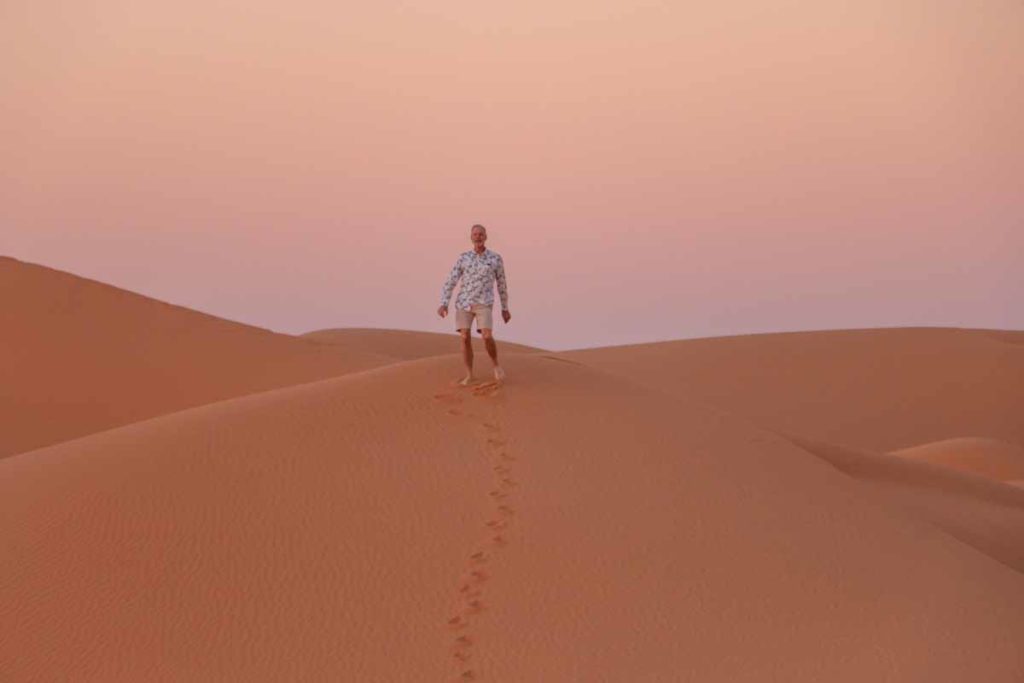
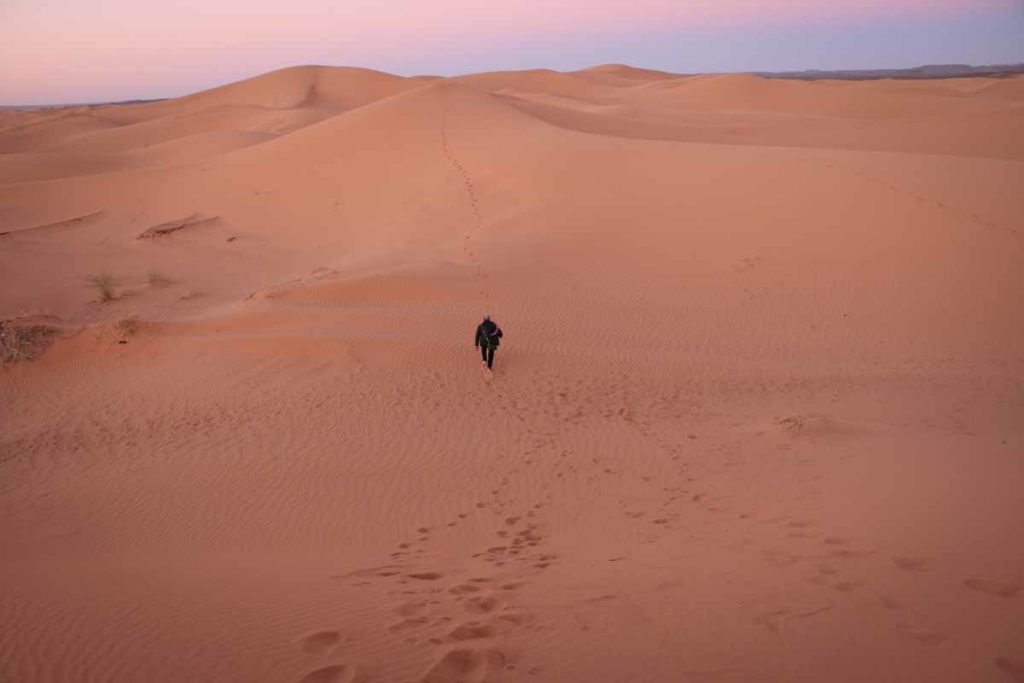
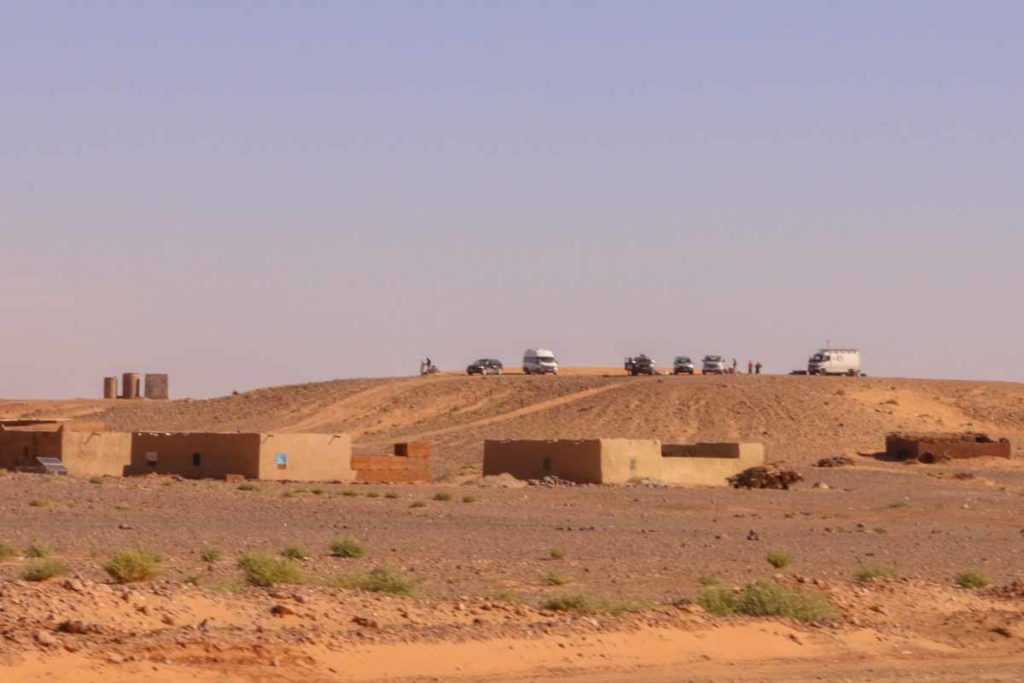
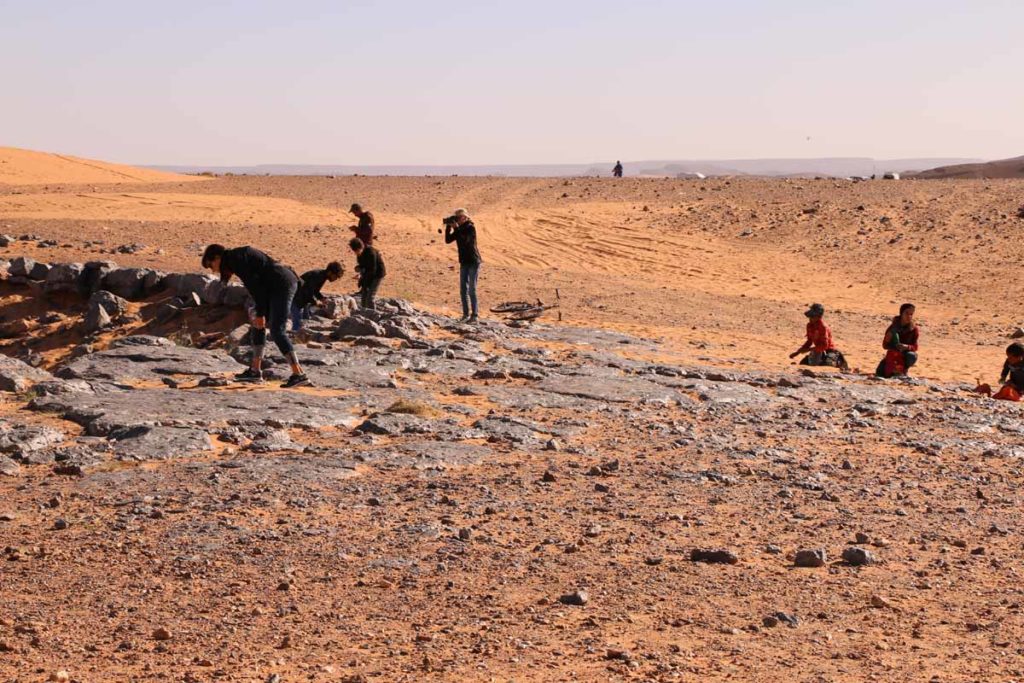
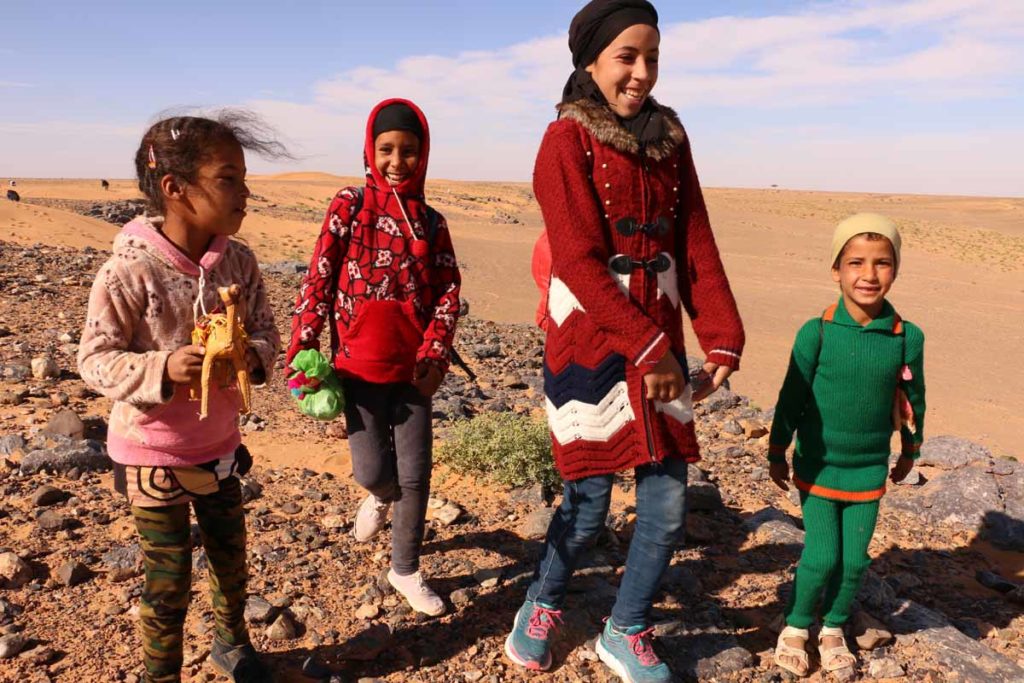
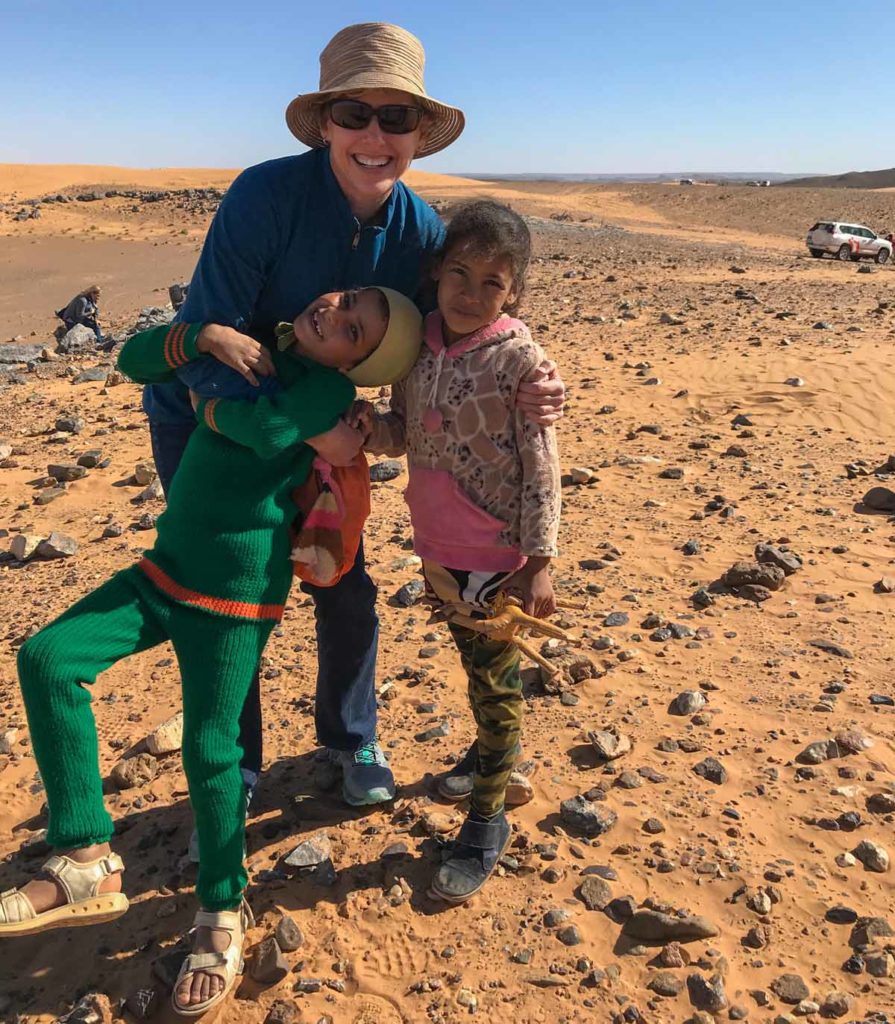
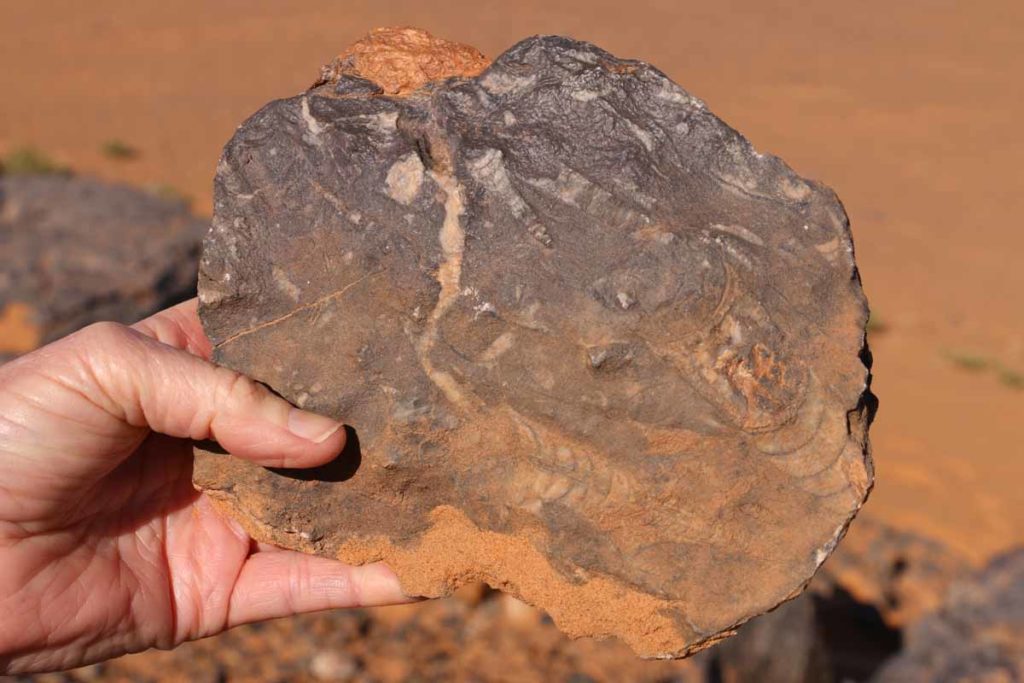
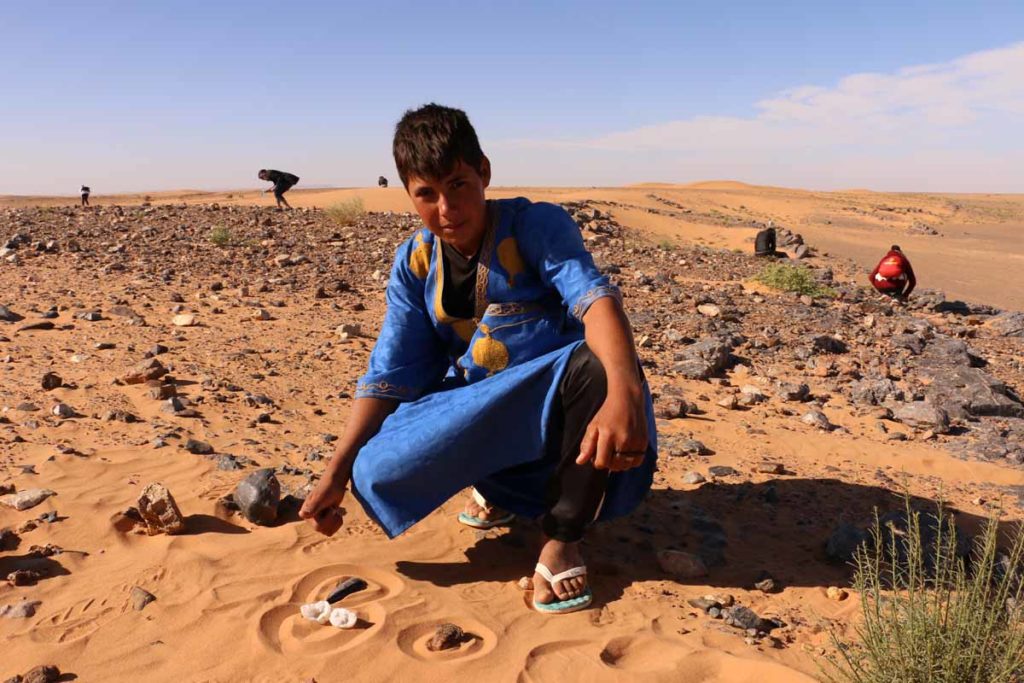
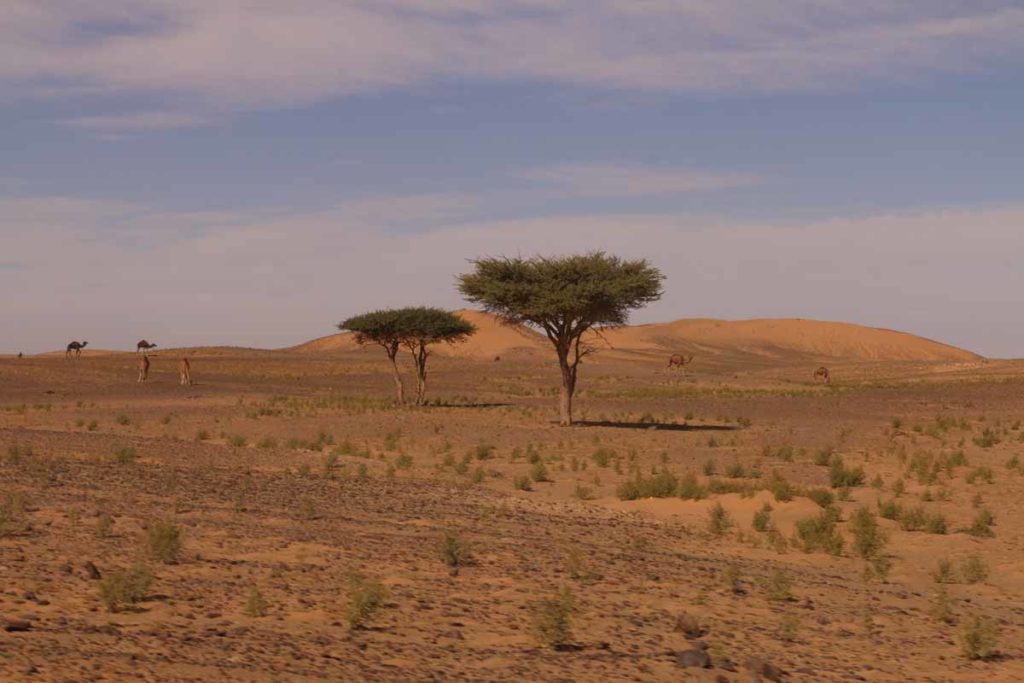
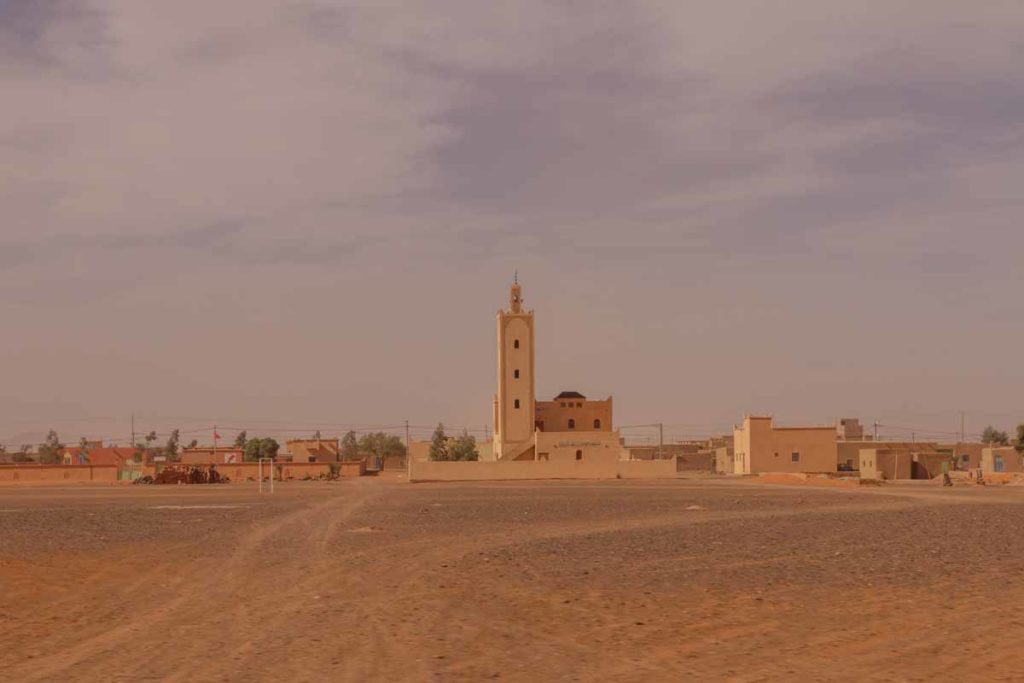
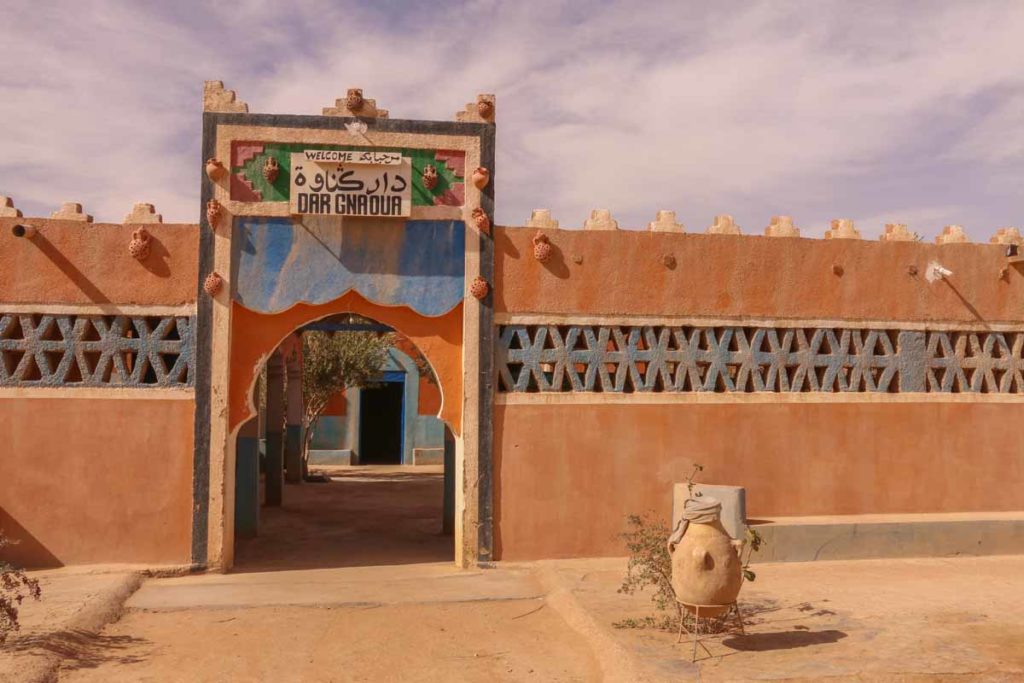
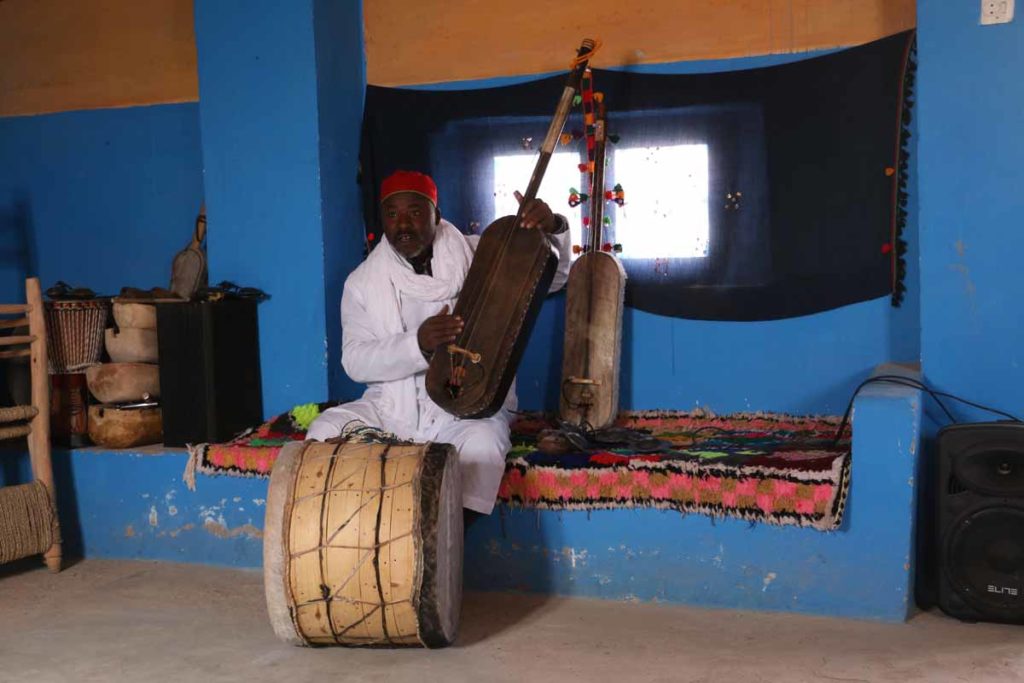
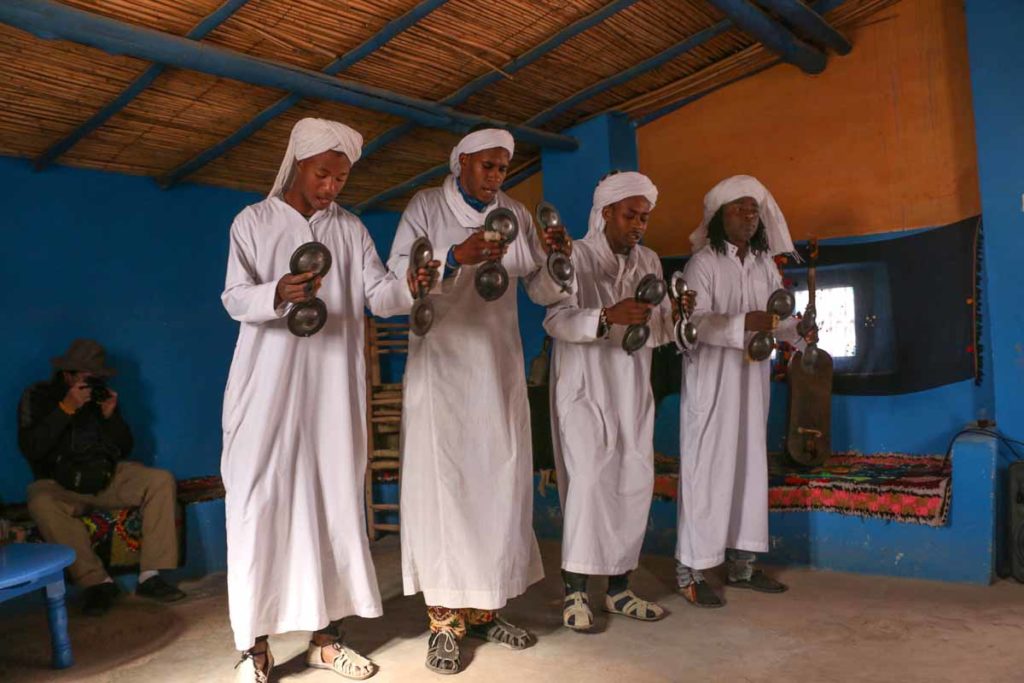
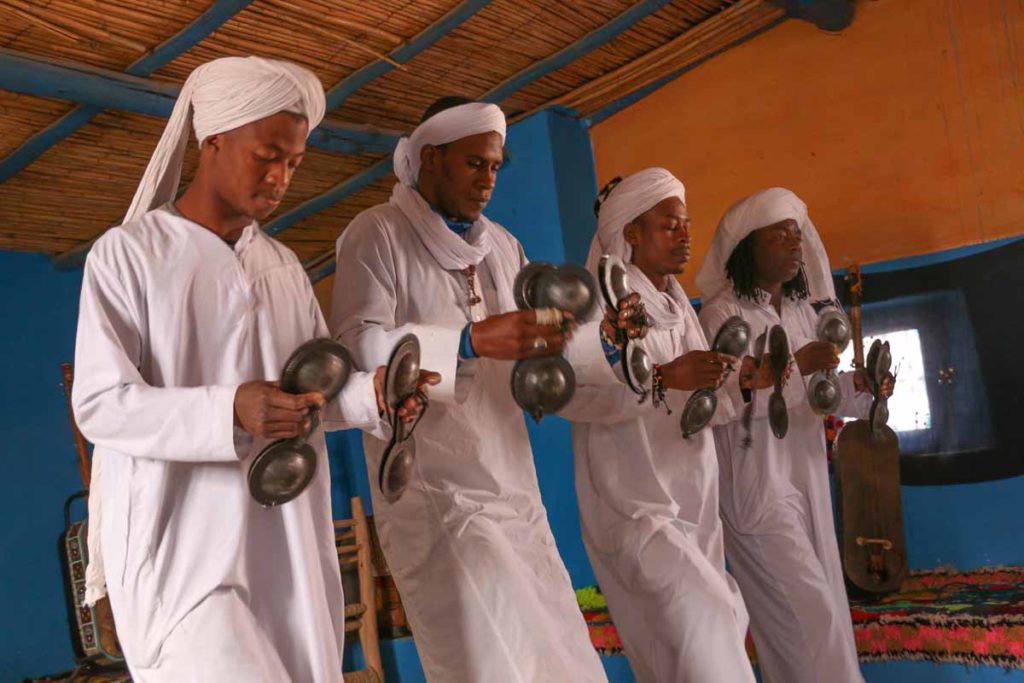
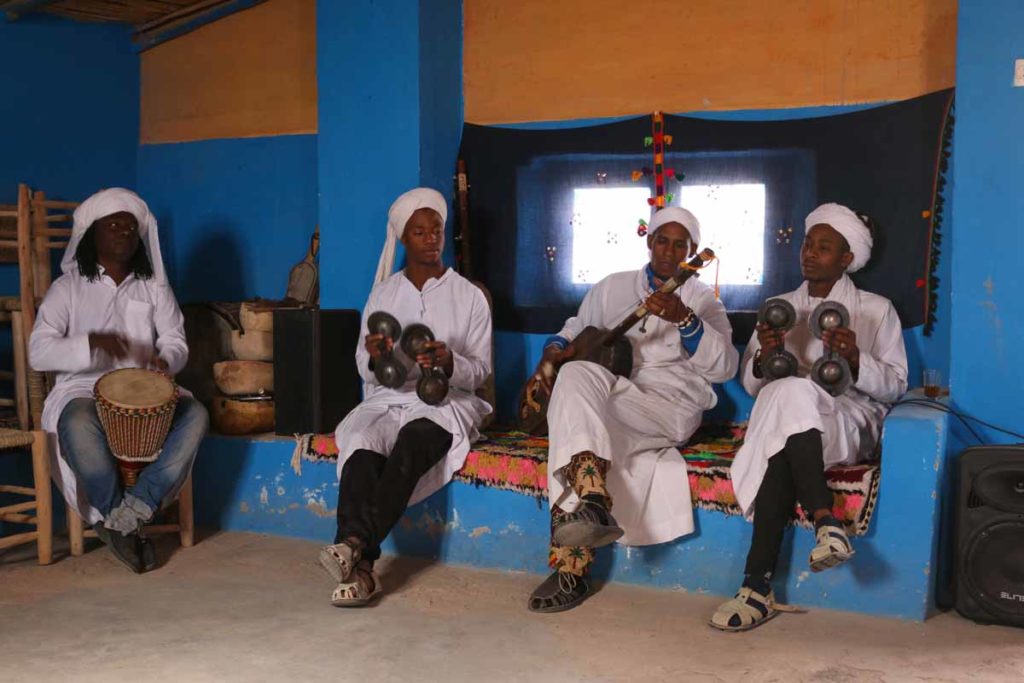
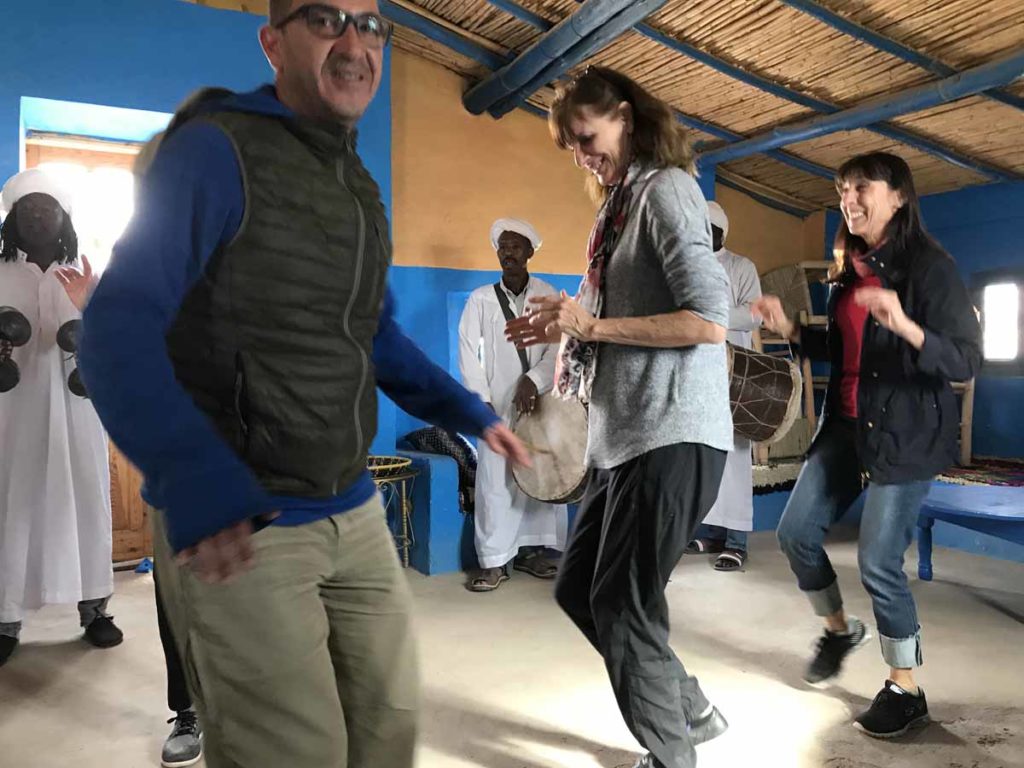
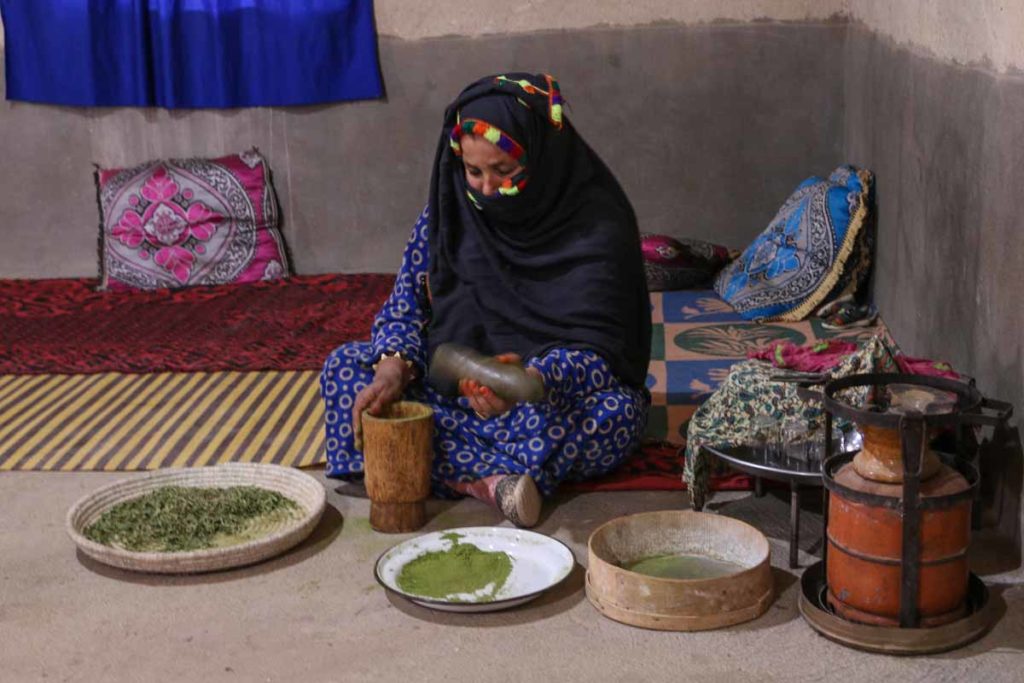
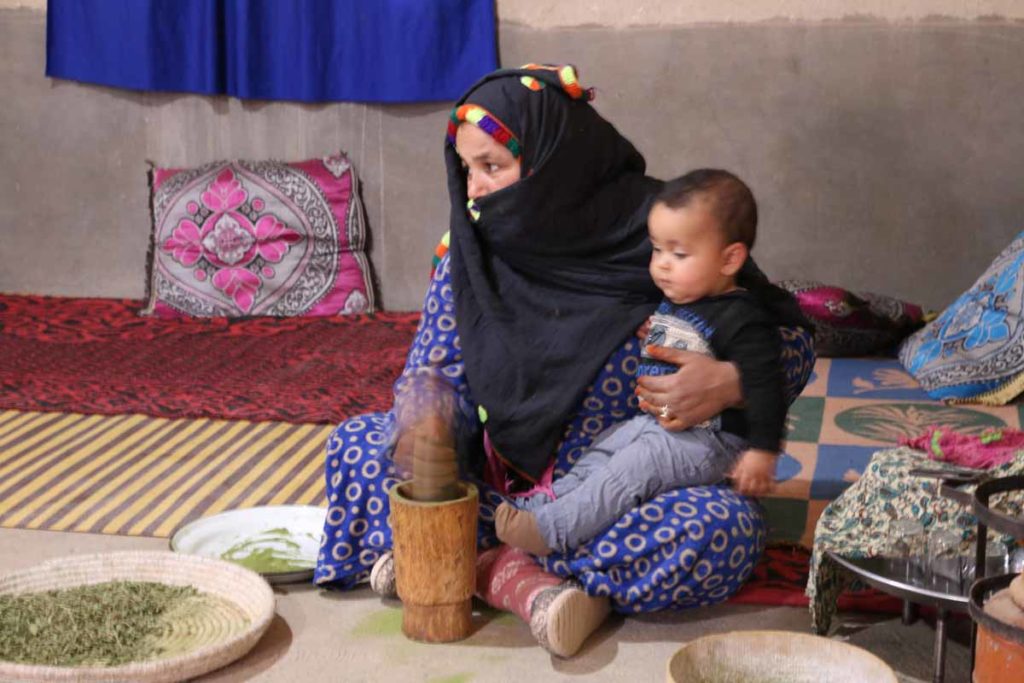
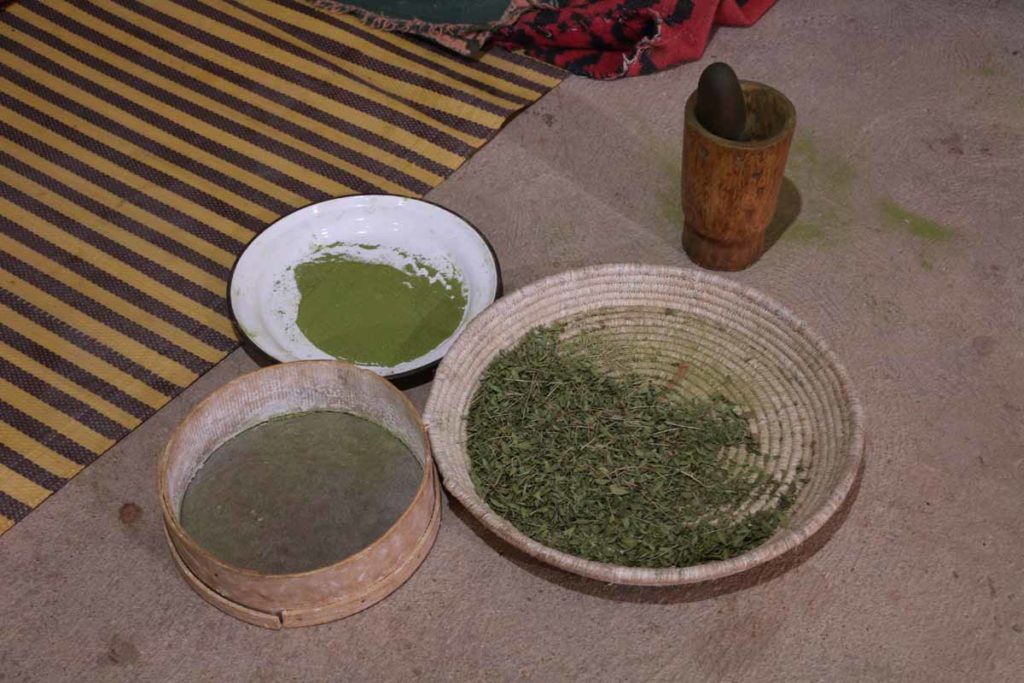
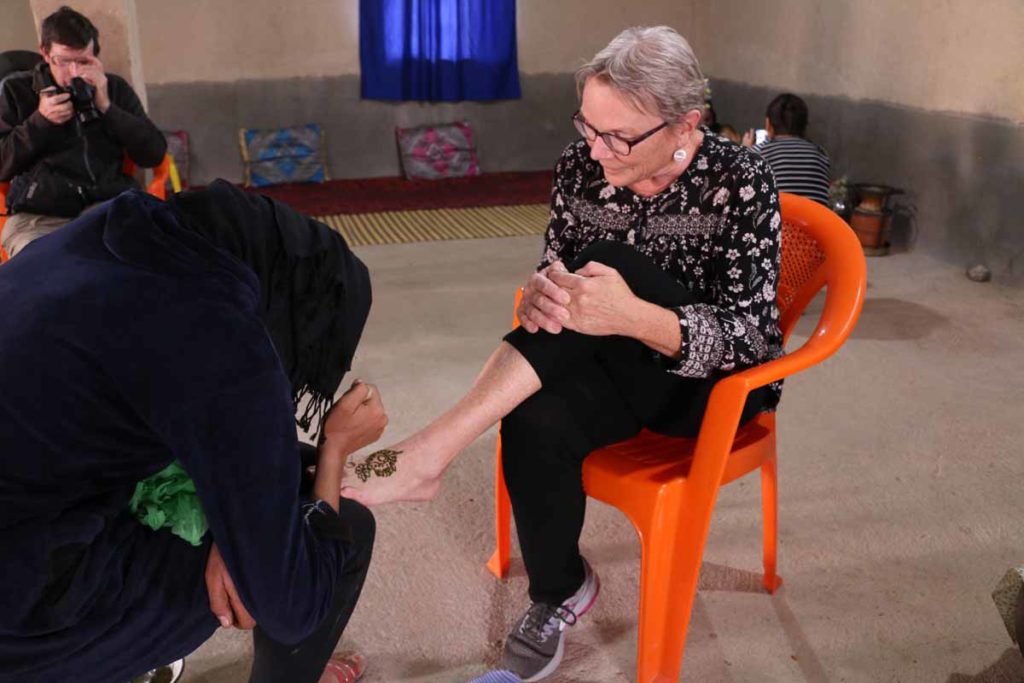
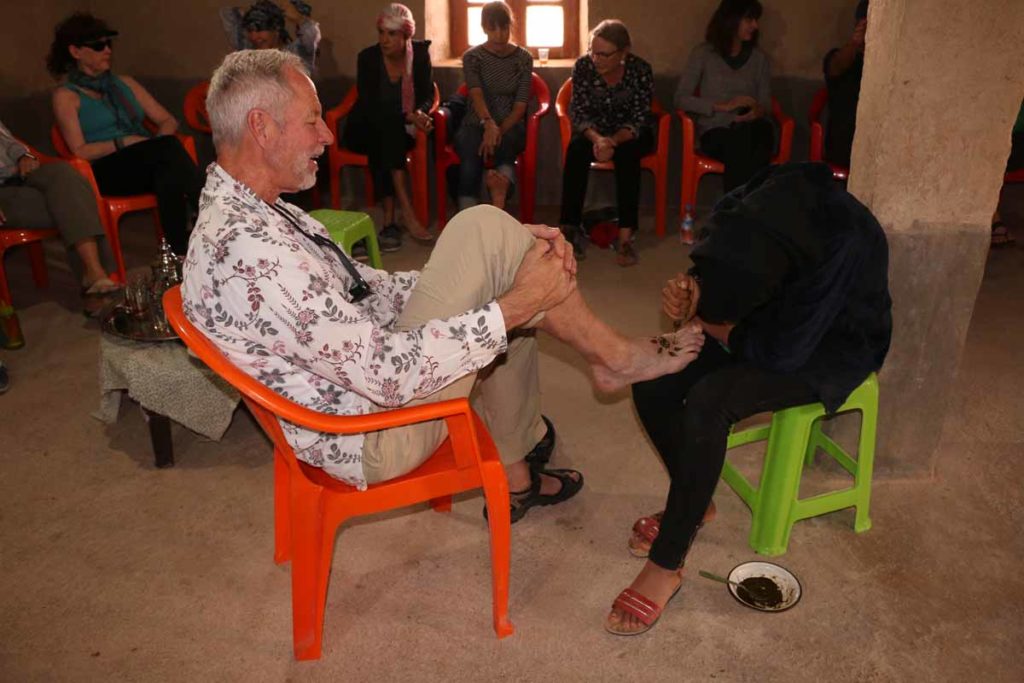
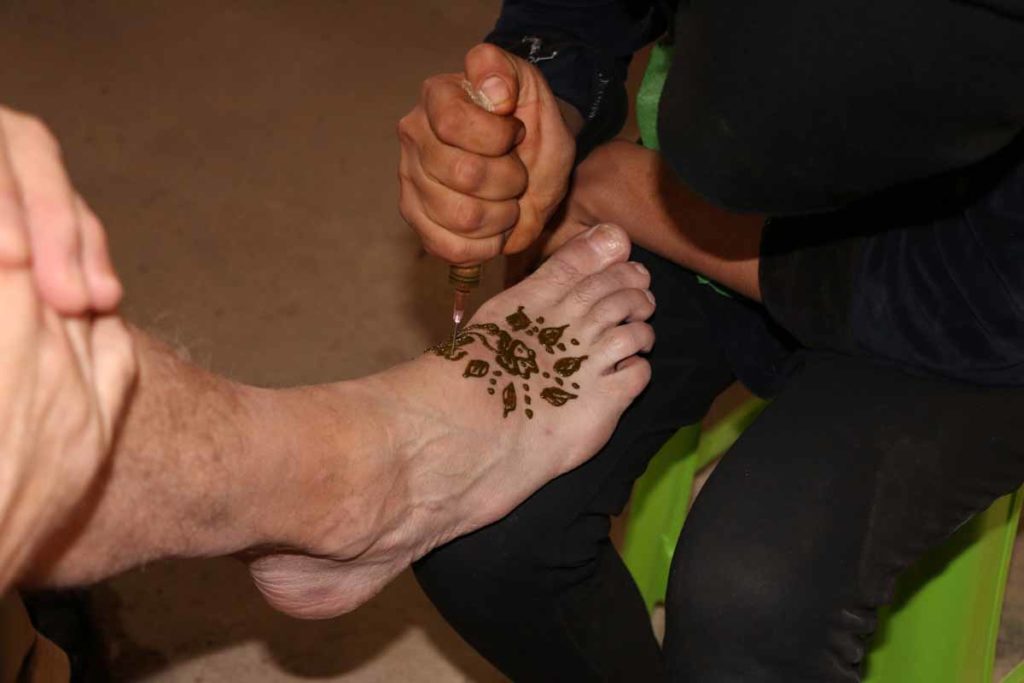
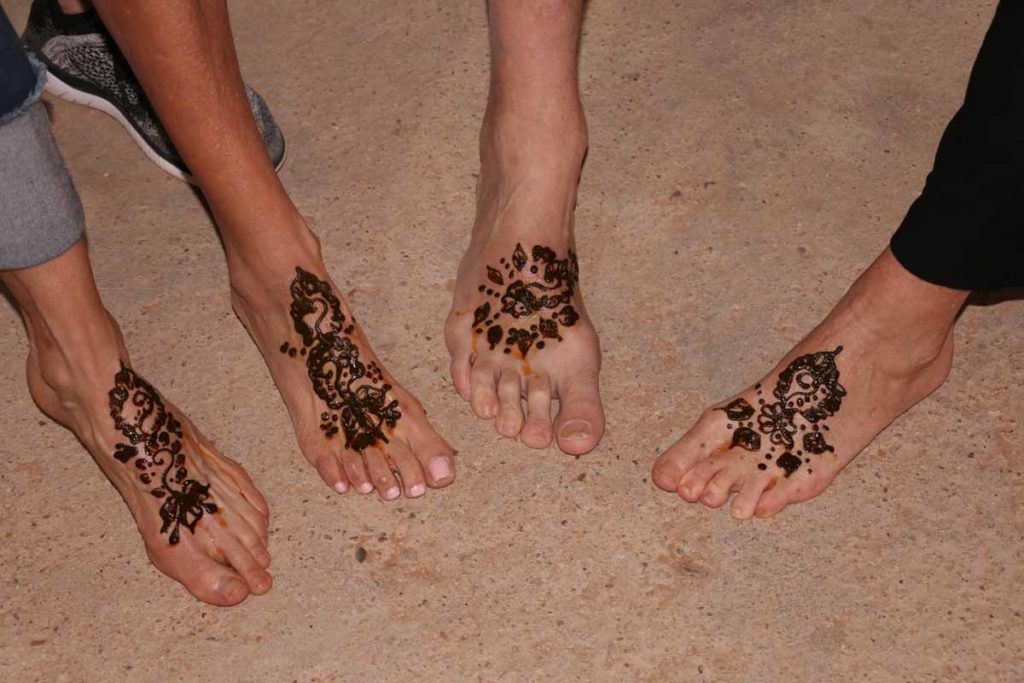
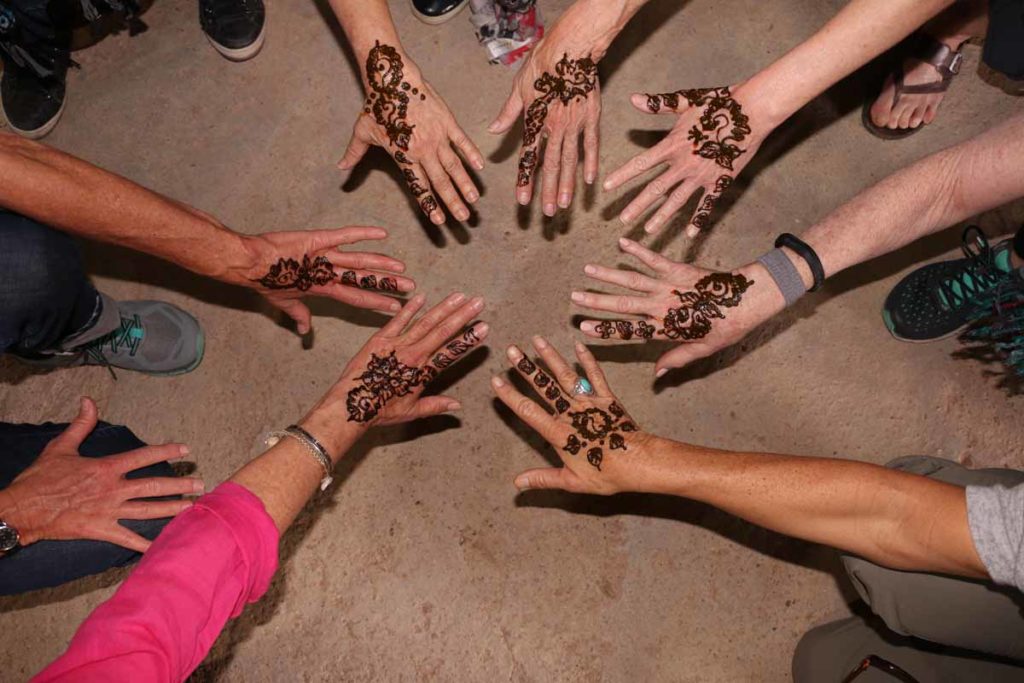
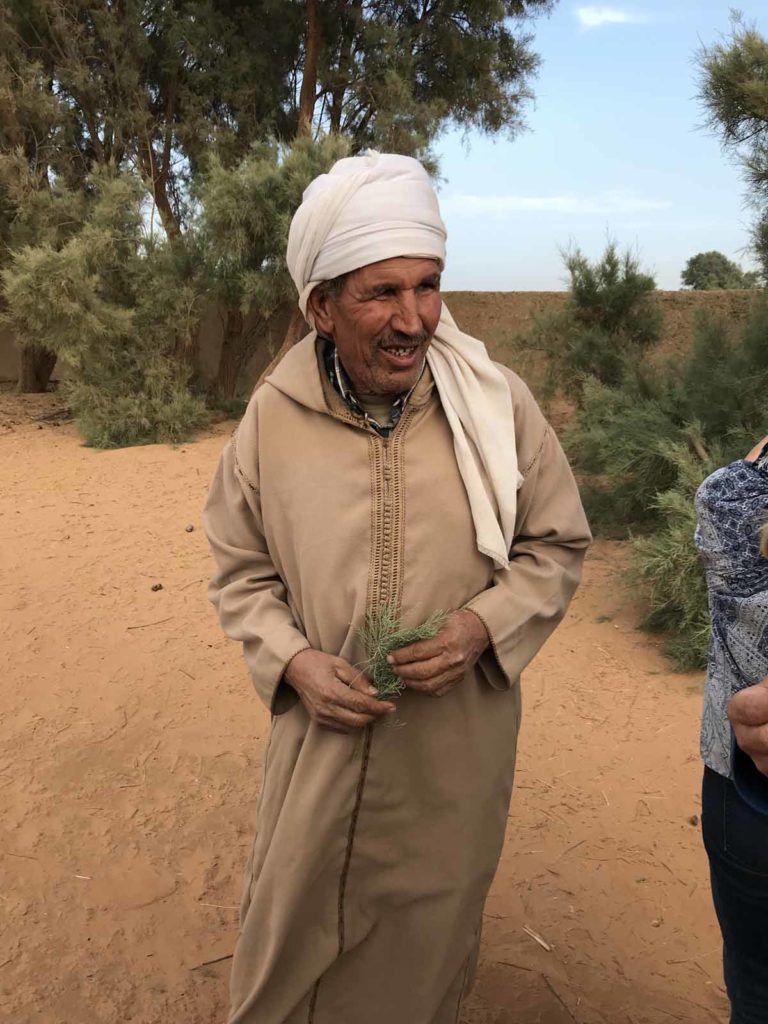
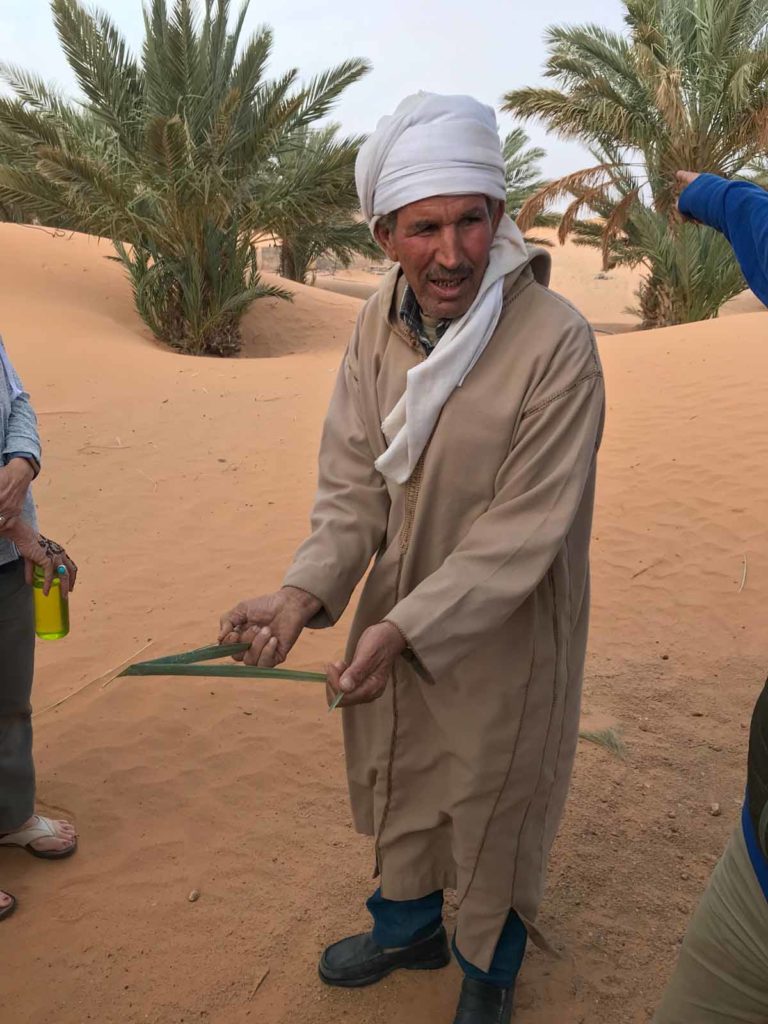
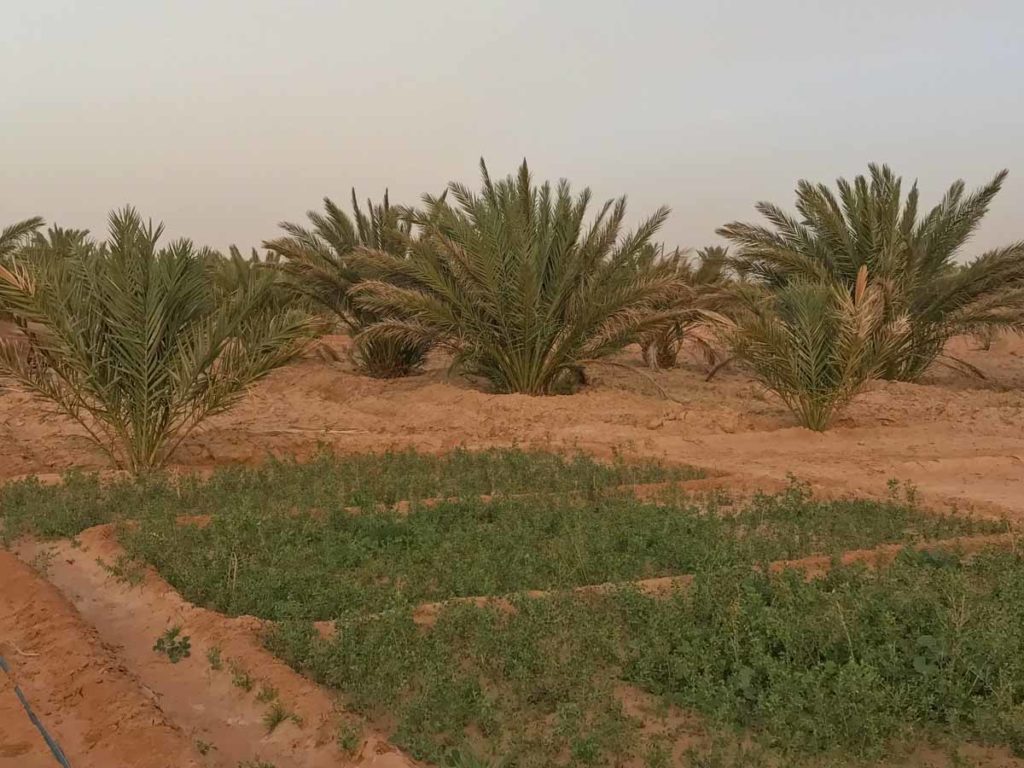
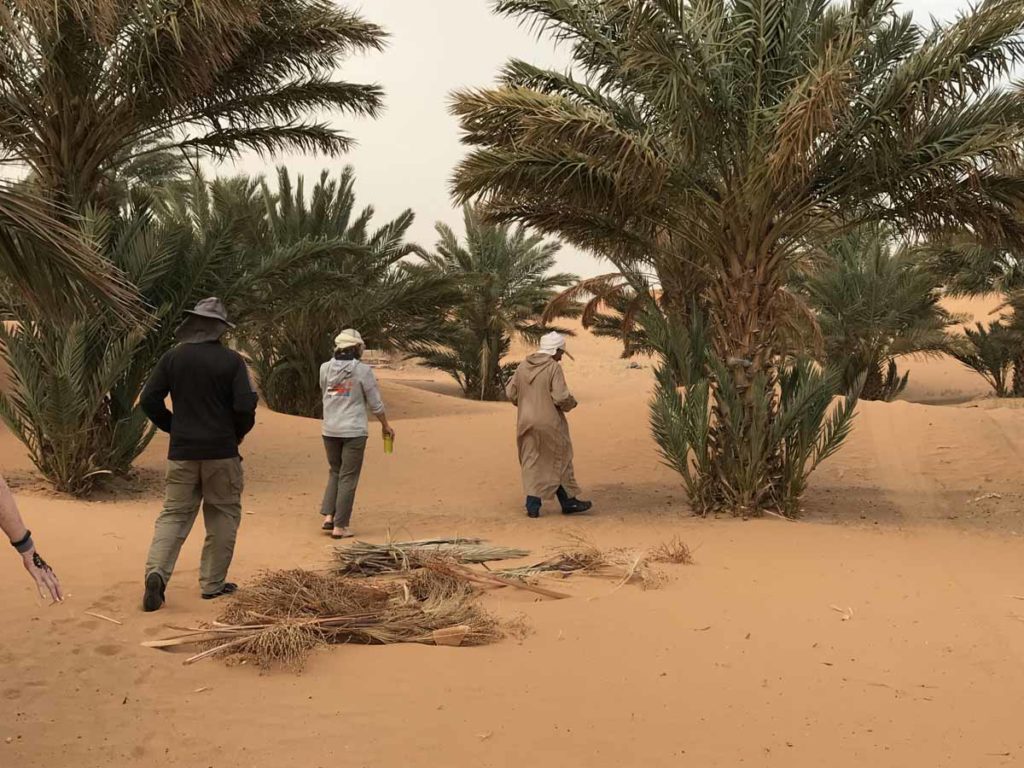
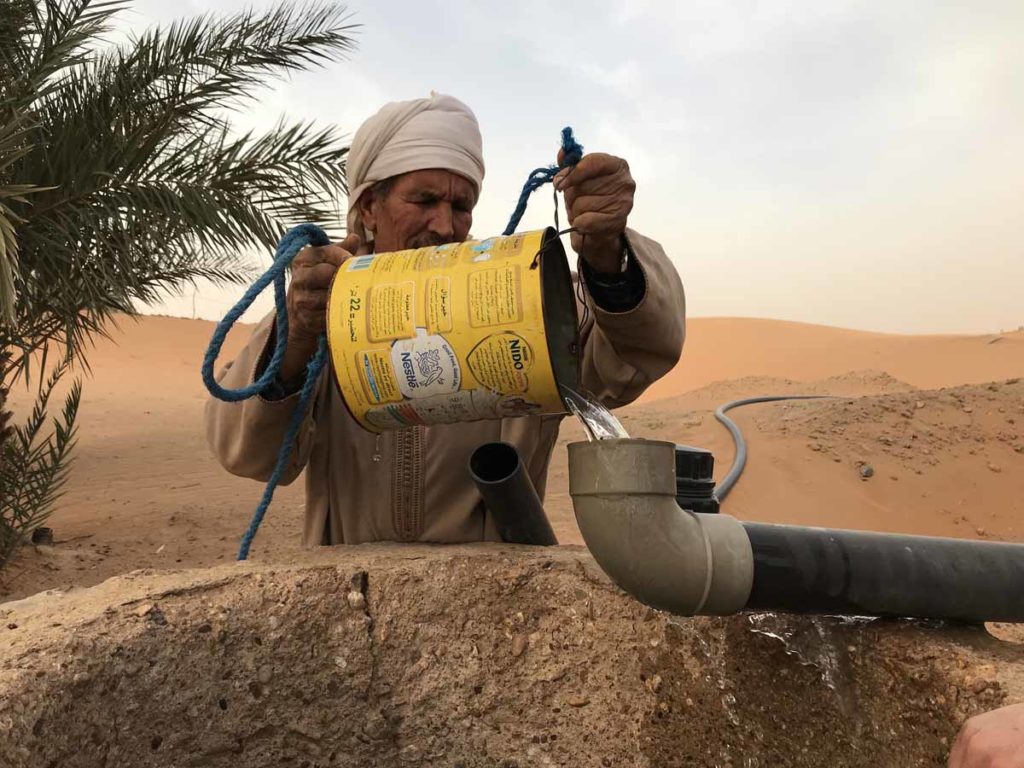
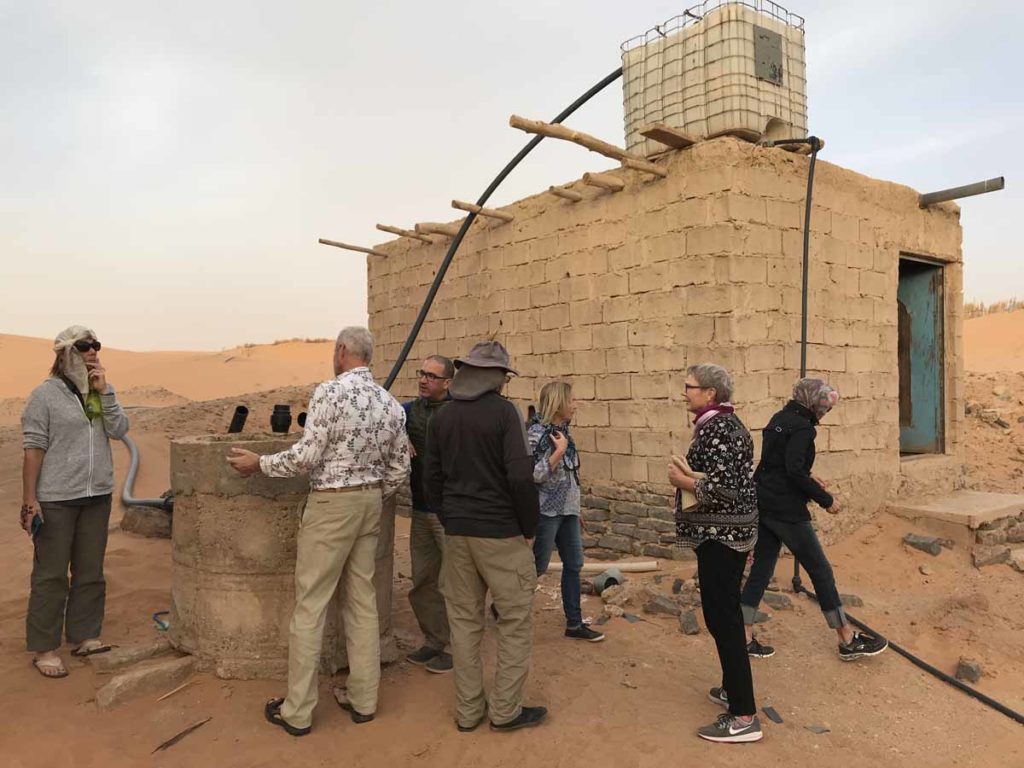
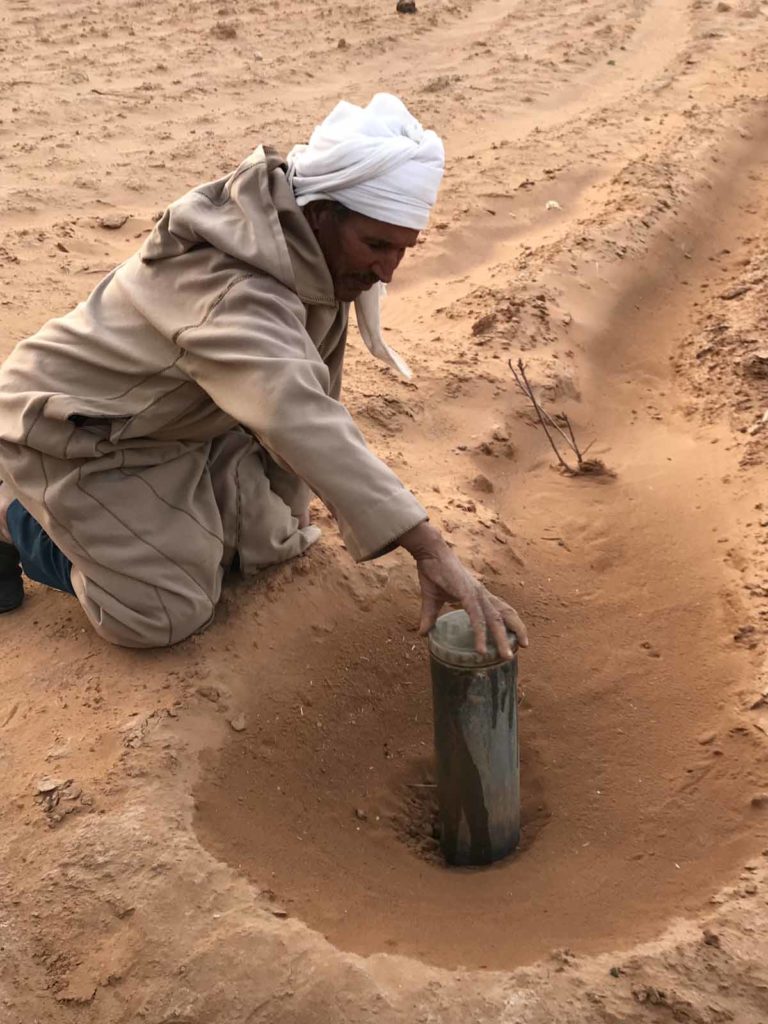
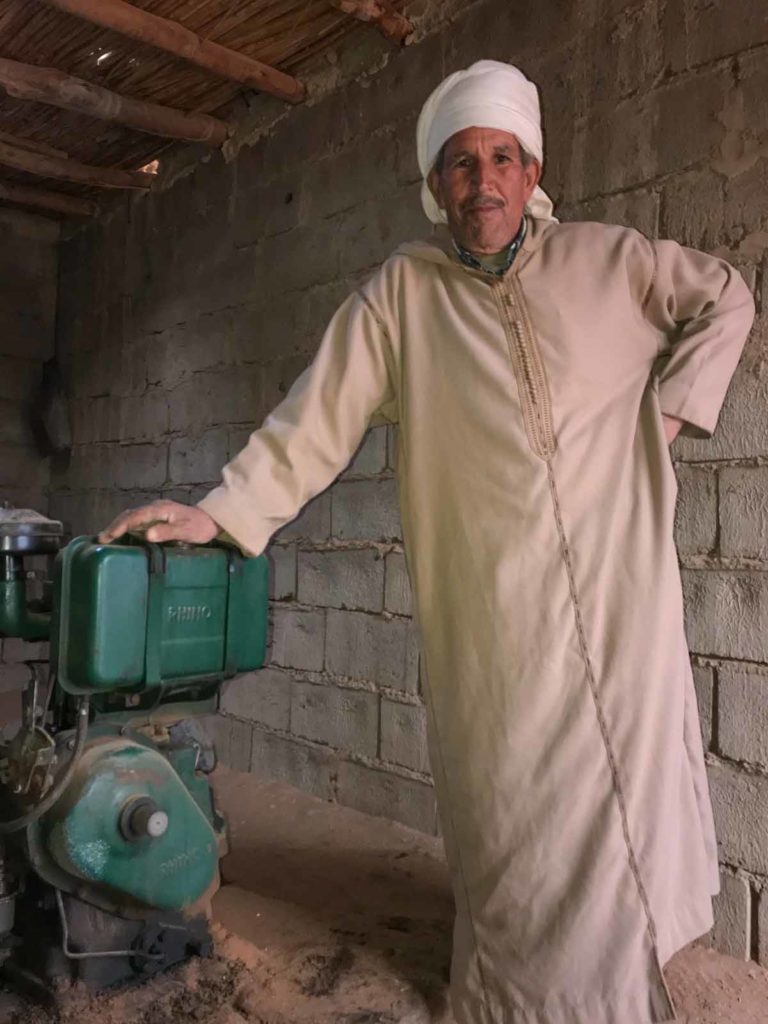
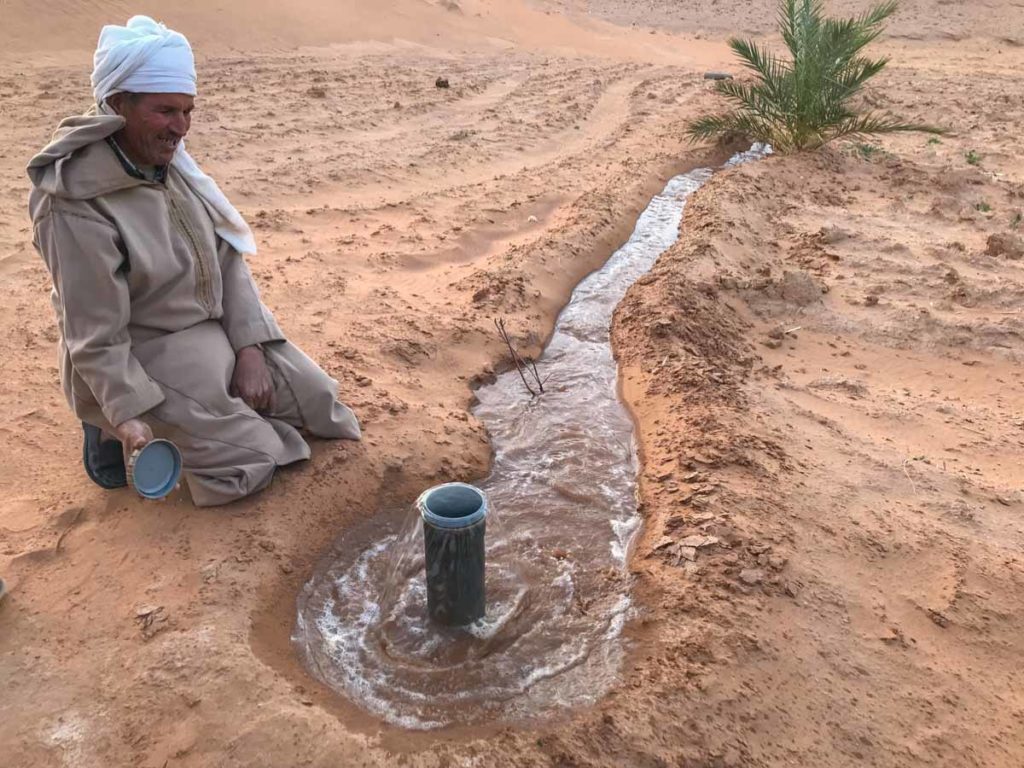
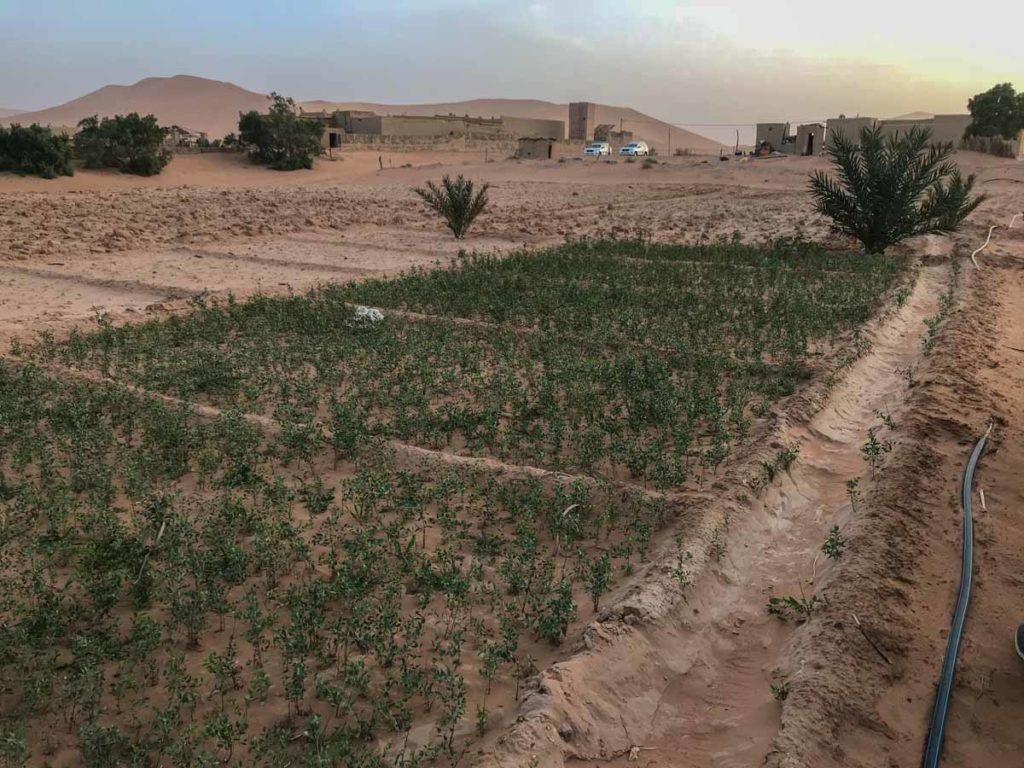
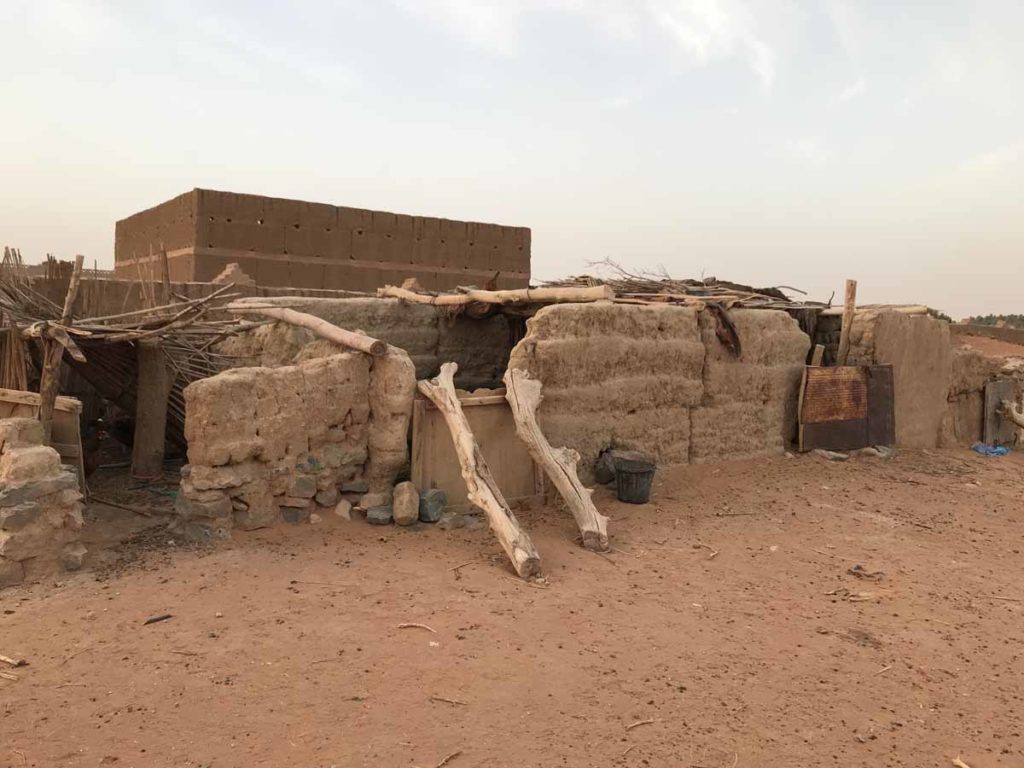
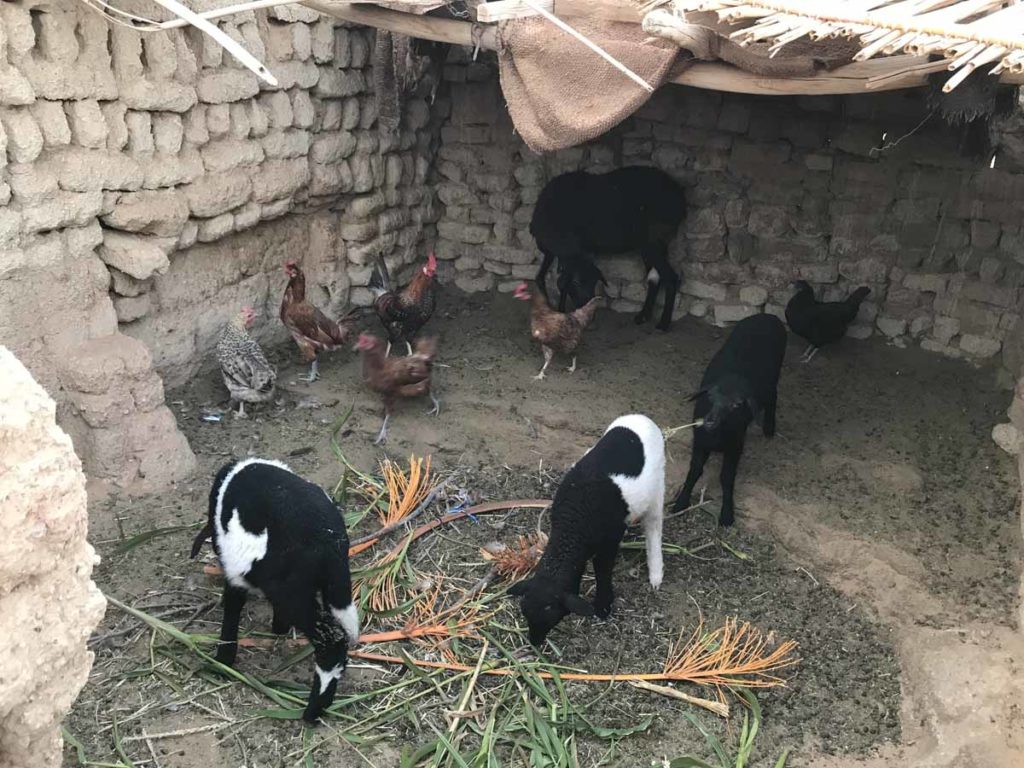
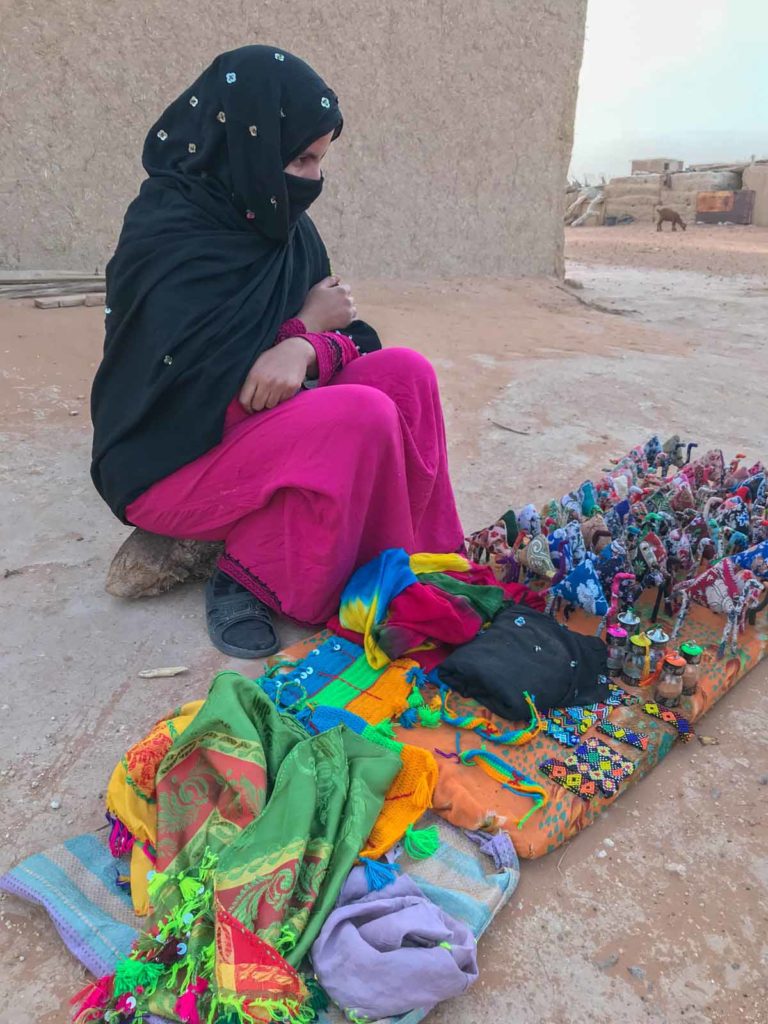
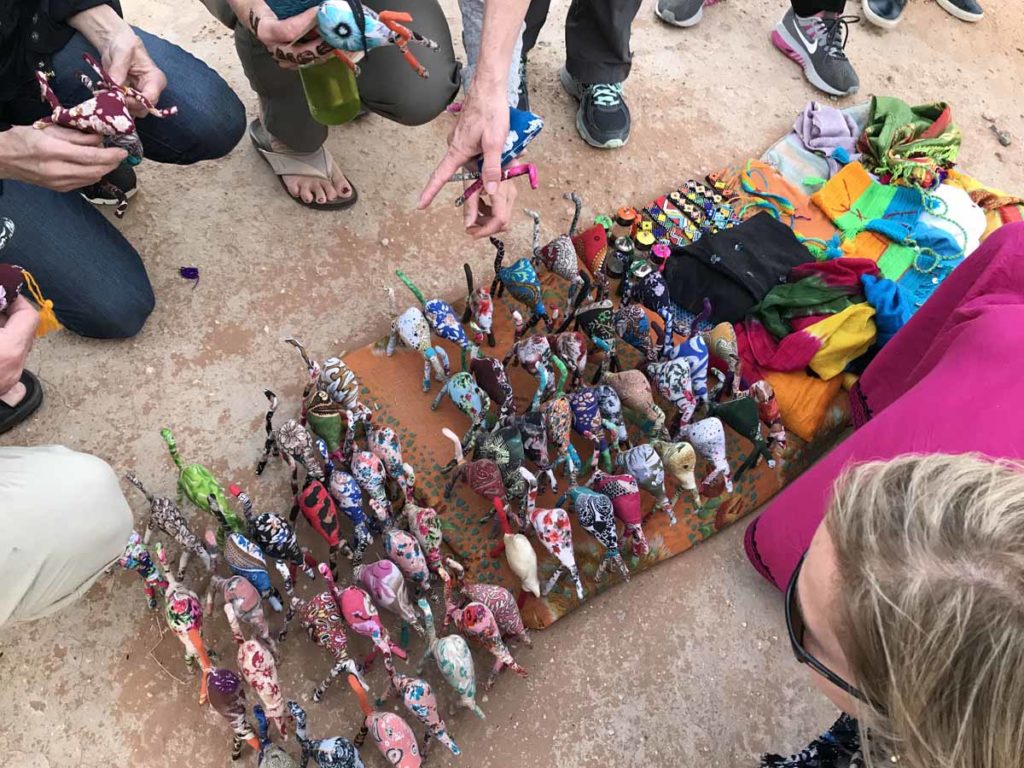
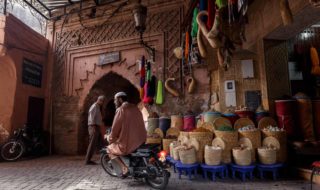
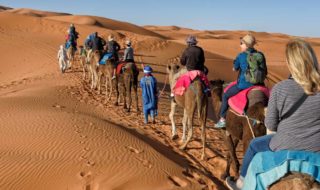
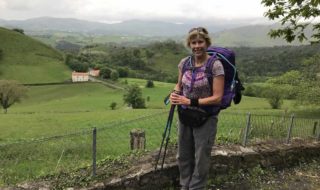
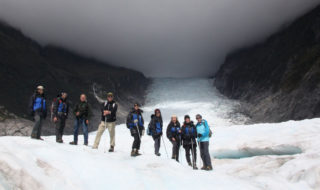
Really, an amazing experience Thank you for sharing with us.
You’re very welcome, Jose. Yes, it was a wonderful trip to Morocco’s Sahara region – as was visiting the entire country!